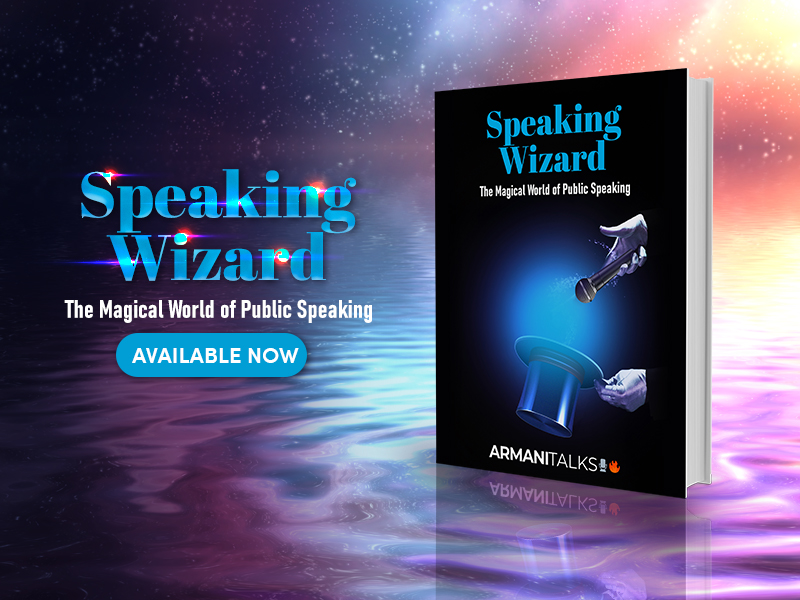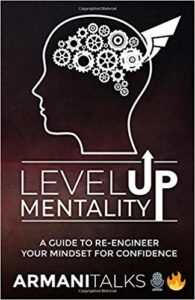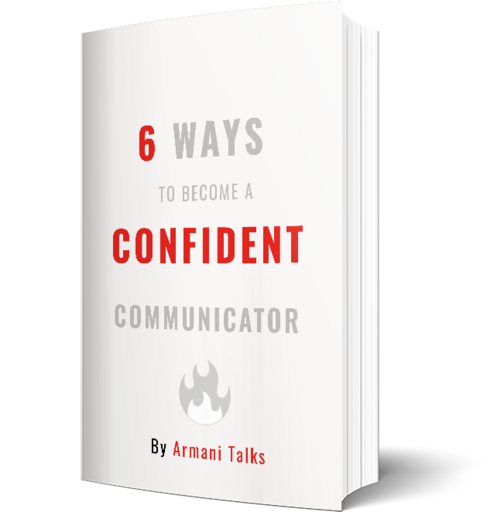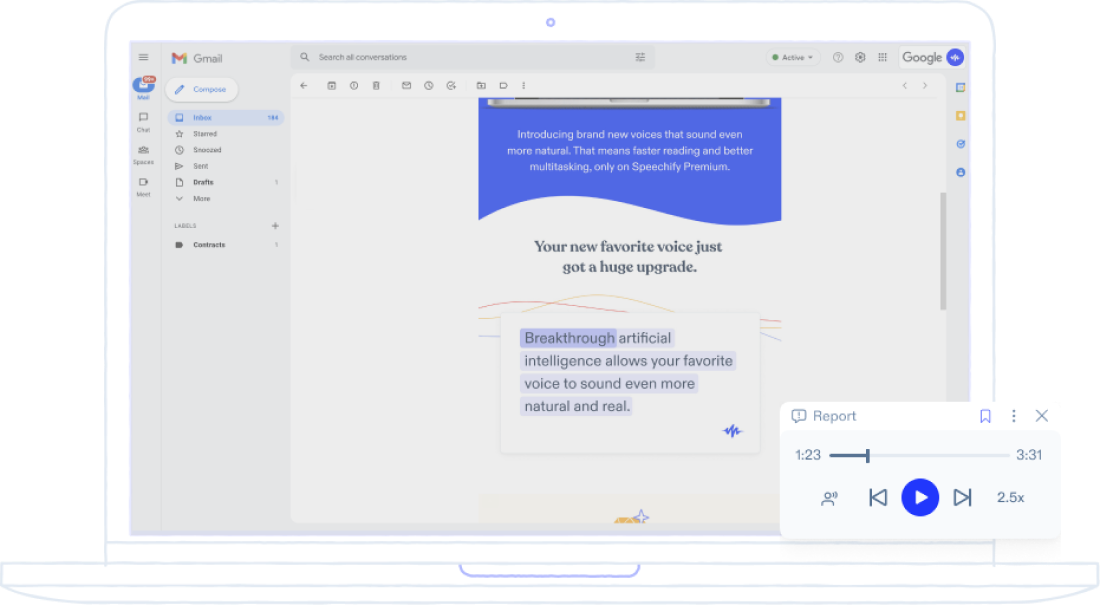
The Seven Best Ways to Make a Speech Longer
Hrideep barot.
- Speech Topics , Workplace Communication

Giving a speech can seem like an ordeal, especially if you don’t know ways to keep it engaging and comprehensive, covering everything and not going off track. Whether it is a school or university speech, a corporate meeting speech, or an event-based speech – you might be required to speak for approx. 5-7 minutes. If that seems like a task to you, here are some insightful ways that will help you make your speech longer and let those minutes sweep by!
Some practical and resourceful ways to prolong your speech can be classified in two ways: one in terms of content that is through voiceful delivery, sharing resources and videos, providing additional examples that support your content, and second in terms of interaction which involves exchanging stories, including question and answer rounds as well as fun segments such as quizzes, polls, and other relevant activities.
However, even before you put these techniques into practice, it’s essential to be focused and specific on the research because “content is the key.” If you aren’t well-versed with the content you provide, you may not be able to use these methods as you will lack materials in the first place. Thus, even before looking for additional ways to support your speech, ensure that the primary content is in place.
1. Practice Voice Modulation to Make Your Speech Longer
The importance of voice modulation is not hidden. If you have ever come across someone who speaks so fast that one cannot grasp a single meaning out of the speech and someone who speaks so slow that one has slipped into daydreaming, then you are undoubtedly aware of how essential voice modulation is and its benefits.
Advantages of Using Voice Modulation
Voice modulation and regulation have numerous advantages. Some of the most important ones include:
- Firstly, it keeps the audience hooked to your speech. For example, when a theatre artist or an actor performs a monologue, you will see that their delivery will include high tones, focusing on the critical and low and medium on the not so essential and passerby information. Additionally, thanks to their voice modulation, there is a very high chance that you even vividly remember what they might have said.
- Secondly, pauses help emphasize the key pointers. Not only does voice modulation include alternating between tones but also taking pauses. When you pause, mainly after an important message, you give time for comprehension and allow your message to sink in with the audience.
The pointers mentioned above have been evident across many famous speeches for a long time. For example: In the very famous “I Have a Dream” Speech by Martin Luther King, you will find that the phrase “I Have a Dream” has been emphasized by using a higher tone compared to the surrounding content. Similarly, effective pauses have been made throughout the speech after conveying important messages where the audience is seen pondering over the content just delivered to them.
So, to elongate your speech, it is essential to practice voice modulation, as changing your tone, pace, and pausing will not only buy you time but will also simultaneously reap fruitful outcomes such as impacting your audience and giving them time to think over what you just said.
“The most precious things in speech are the pauses.” Ralph Waldo Emerson (quotesgram)
2. Lengthen Your Speech by Engaging with Your Audience
Talking for 5 minutes on a stretch can seem burdensome; in the sense that there is a chance that questions like “what will I say for so long,” “how can I talk for 5 minutes? That’s too much!”, “What am I even going to say?” are popping up in your head. But here’s the secret – you don’t need to deliver a monologue for the entire time if you include multiple engagement segments with the listeners.
Ways to Engage With the Audience
You can interact and engage with the audience by including sections such as:-
- Questions and Answer Rounds – Here, you can ask questions to the audience related to the previously delivered content. This will make the environment interactive and help you infer if they have grasped the message you want to provide. For example, consider that you are delivering a speech on the topic “Investment Strategies You Can Follow.” After sharing ways you can invest; you can include a quick Q and A segment asking the audience strategies you shared, the more/ less risky ones, etc.
- Sharing a Story – This can often entail asking people in the audience to share their personal experiences or give their viewpoints about the topic. Taking the same example of “Investment Strategies You Can Follow ,” you can, at certain intervals, ask the audience their experience with any of the strategies, if they have had a positive or negative experience, and any tips to add to the same.
Benefits of Engaging With the Audience
- Including multiple conversational segments makes the audience feel like their views matter, and they tend to concentrate, grasp, and interact to their best capability.
- Additionally, interacting with the audience is an insightful way to gain non-verbal feedback. It will help you understand if the audience can make sense of the information you are delivering.
Thus, engaging with the audience is a constructive way to make your speech longer and gain subtle feedback.

3 . Lengthen Your Speech by Showing Videos
Another method that you can include in your speech delivery to make it longer than usual is by showing videos and other visuals like presentations to the audience. You will benefit from a few minutes to spare when your viewers engage in such visuals and gain some simultaneous benefits.
Benefits of Including a Visual Stimuli
The impact of visual learning is way higher than verbal. One can keep explaining and elaborating on a very expertized topic, still find that their audience isn’t much engaged since they don’t have any visuals to look at. However, learning and understanding are increased when both modes are combined. To continue with the same example of “Investment Strategies,” ; along with your speech, you can prepare a presentation highlighting key strategies and testimonials of people who have benefited from the same. Moreover, you can find some informational videos on YouTube and other platforms that can supplement your content, and you will be good to present!
Thus, if you wish to elongate your speech to meet the allotted time, you can always show videos on relevant topics and keep a presentation covering pointers or examples that the audience can see!
“Content is the king, but design is the queen.” Anonymous (Pinterest)
4. Include Examples to Lengthen Your Speech
If you were to follow a traditional outline and give an introduction, a few pointers, advantages, disadvantages, and then the conclusion, there is a chance you might be left with some time in hand before your fixed time is up. However, one way to make your mundane framework a little more comprehensive is by including relevant examples.
Why Is It Essential To Include Examples
Supplementing your theoretical content with some helpful examples has some hidden benefits –
- Firstly, Examples help better understand the extensive content more straightforwardly. If you were to talk about “Environmental Awareness,” you can include examples of the Chipko Movement in India or the Contemporary Environmental Movement in Europe to set the context of how environmental awareness has been done through history.
- Secondly, you can also link examples to the previously mentioned interaction with the audience by asking relevant examples from their end and making the session more engaging and interactive!
Similarly, if I were to state the subtopics and give a brief explanation in this article, there are likely some unfilled gaps of understanding still left open. However, if not noticed, I am trying to include relevant examples such as “Investment Strategies” and “Environmental Awareness” mentioned above to help you better understand the theoretical information provided.
Hence, if you wish to communicate the information thoroughly, try to include relevant examples wherever possible so that passive listeners easily understand it! And I’m sure 2 minutes will sweep by!
5. Incorporate Fun Segments to Lengthen Your Speech
You are more likely to enjoy a speech or a talk if it’s engaging rather than monotonous. Having to hear some continuously for a considerable period is a task, and to deliver one – is a more strenuous one. So, to make it less challenging and more interactive and fun – it’s advisable to include collaborating segments to your speech.
Some Creative Ways to Make Fun Segments
These sections can take the form of anything – ideas as mentioned earlier, such as conversing with the audience or showing videos; however, you can choose to be more creative by including:
- Polls: wherein you can put up a question and ask the audience to vote and choose a particular option. For example, “ Shares vs. Property,” which is a more risky investment? ” can be an example of a poll question.
- Games: This can be a more informal way, such as giving a picture, finding an object, solving a riddle, etc. For example, Word Puzzles of investment strategies can be a fun and light game to play.
- Quizzes : This can include a series of questions similar to polls but having more options and elaborative than the former. One such question could be – “What is the best way to learn about investment – books/news/media/none.”
Comprising your speech with such segments will also help you understand if the audience is grasping the content and take up a few minutes of your otherwise speaking time.
Resources You Can Use While Making Your Segments
There are some helpful websites that you can use to make quizzes, polls, and games such as: –
- Slido – https://www.sli.do/
- Mentimeter – https://www.mentimeter.com/
- Kahoot – https://kahoot.it/
- Padlet – https://padlet.com/
These websites are user-friendly and have been used by people worldwide to supplement their presentations, talks, and lectures. So, go ahead and use these tools smartly to make your speech not only unique but also secretly longer!

6. Share Resources Towards the End
A very subtle way to lengthen your speech without seeming repetitive or dragging is to share some helpful resources on your topic towards the end.
How Does Sharing Resources Help?
Sharing resources and additional information has its pros. Mainly, it portrays the idea that you wish to help the audience gain more insight on the said topic and lets you gain some opinions and views from the audience. So, when you research and prepare the content for your delivery in the first place, you can save some resources in the form of articles, papers, videos, movies, books, and NGOs (whichever applies to your respective topic), which you can then provide in the form of presentations, pamphlets or even verbally.
For example: in this very article, I have tried my best to provide you resources through videos, website links, and examples. Similarly, if you were to talk about “Investment Strategies,” you can provide website links, news and journal articles, video suggestions, courses, and books that will assist them in understanding the concept at a deeper level.
Sharing helpful resources can take up approximately 2-3 minutes, often aiding in lengthening your speech helpfully and effectively.

7. Reiterate The Main Points to Lengthen Your Speech
Another way that you can make your speech longer yet more impactful is by repeating the main themes and points you want to convey to the audience. You can do so by paraphrasing and focusing on the tone and pauses through voice modulation.
For example, if “a happy mind is a key to a happy heart” is the message that I wish to convey, I can directly say this statement once at the start and once at the end. Other times, if I want to communicate the same idea subtly, I can include phrases like – “a happy heart often depends on a happy mind” or “happiness of mind and heart are linked.”
So, I essentially wish to convey that by summarizing the essential pointers and phrasing the content, you can elongate your speech and gain the benefit of creating a substantial impact on the audience.
As we approach the end of the article, I have tried my best to provide resources that answer your question and subtly help you gain some benefits. One can also include some not so helpful ways, but if you were to take up some tools, it might as well be beneficial! We hope that this article has been helpful to you! Happy Speeching!
“I’ve learned that people will forget what you said, people will forget what you did, but people will never forget how you made them feel.” Maya Angelou
Enroll in our transformative 1:1 Coaching Program
Schedule a call with our expert communication coach to know if this program would be the right fit for you

7 Keys to Emcee Like a Pro: Unlock Your Hosting Potential

8 Ways to Rise Above the Noise to Communicate Better

How to Negotiate: The Art of Getting What You Want

- [email protected]
- +91 98203 57888
Get our latest tips and tricks in your inbox always
Copyright © 2023 Frantically Speaking All rights reserved
Kindly drop your contact details so that we can arrange call back
Select Country Afghanistan Albania Algeria AmericanSamoa Andorra Angola Anguilla Antigua and Barbuda Argentina Armenia Aruba Australia Austria Azerbaijan Bahamas Bahrain Bangladesh Barbados Belarus Belgium Belize Benin Bermuda Bhutan Bosnia and Herzegovina Botswana Brazil British Indian Ocean Territory Bulgaria Burkina Faso Burundi Cambodia Cameroon Canada Cape Verde Cayman Islands Central African Republic Chad Chile China Christmas Island Colombia Comoros Congo Cook Islands Costa Rica Croatia Cuba Cyprus Czech Republic Denmark Djibouti Dominica Dominican Republic Ecuador Egypt El Salvador Equatorial Guinea Eritrea Estonia Ethiopia Faroe Islands Fiji Finland France French Guiana French Polynesia Gabon Gambia Georgia Germany Ghana Gibraltar Greece Greenland Grenada Guadeloupe Guam Guatemala Guinea Guinea-Bissau Guyana Haiti Honduras Hungary Iceland India Indonesia Iraq Ireland Israel Italy Jamaica Japan Jordan Kazakhstan Kenya Kiribati Kuwait Kyrgyzstan Latvia Lebanon Lesotho Liberia Liechtenstein Lithuania Luxembourg Madagascar Malawi Malaysia Maldives Mali Malta Marshall Islands Martinique Mauritania Mauritius Mayotte Mexico Monaco Mongolia Montenegro Montserrat Morocco Myanmar Namibia Nauru Nepal Netherlands Netherlands Antilles New Caledonia New Zealand Nicaragua Niger Nigeria Niue Norfolk Island Northern Mariana Islands Norway Oman Pakistan Palau Panama Papua New Guinea Paraguay Peru Philippines Poland Portugal Puerto Rico Qatar Romania Rwanda Samoa San Marino Saudi Arabia Senegal Serbia Seychelles Sierra Leone Singapore Slovakia Slovenia Solomon Islands South Africa South Georgia and the South Sandwich Islands Spain Sri Lanka Sudan Suriname Swaziland Sweden Switzerland Tajikistan Thailand Togo Tokelau Tonga Trinidad and Tobago Tunisia Turkey Turkmenistan Turks and Caicos Islands Tuvalu Uganda Ukraine United Arab Emirates United Kingdom United States Uruguay Uzbekistan Vanuatu Wallis and Futuna Yemen Zambia Zimbabwe land Islands Antarctica Bolivia, Plurinational State of Brunei Darussalam Cocos (Keeling) Islands Congo, The Democratic Republic of the Cote d'Ivoire Falkland Islands (Malvinas) Guernsey Holy See (Vatican City State) Hong Kong Iran, Islamic Republic of Isle of Man Jersey Korea, Democratic People's Republic of Korea, Republic of Lao People's Democratic Republic Libyan Arab Jamahiriya Macao Macedonia, The Former Yugoslav Republic of Micronesia, Federated States of Moldova, Republic of Mozambique Palestinian Territory, Occupied Pitcairn Réunion Russia Saint Barthélemy Saint Helena, Ascension and Tristan Da Cunha Saint Kitts and Nevis Saint Lucia Saint Martin Saint Pierre and Miquelon Saint Vincent and the Grenadines Sao Tome and Principe Somalia Svalbard and Jan Mayen Syrian Arab Republic Taiwan, Province of China Tanzania, United Republic of Timor-Leste Venezuela, Bolivarian Republic of Viet Nam Virgin Islands, British Virgin Islands, U.S.

- PRO Courses Guides New Tech Help Pro Expert Videos About wikiHow Pro Upgrade Sign In
- EDIT Edit this Article
- EXPLORE Tech Help Pro About Us Random Article Quizzes Request a New Article Community Dashboard This Or That Game Popular Categories Arts and Entertainment Artwork Books Movies Computers and Electronics Computers Phone Skills Technology Hacks Health Men's Health Mental Health Women's Health Relationships Dating Love Relationship Issues Hobbies and Crafts Crafts Drawing Games Education & Communication Communication Skills Personal Development Studying Personal Care and Style Fashion Hair Care Personal Hygiene Youth Personal Care School Stuff Dating All Categories Arts and Entertainment Finance and Business Home and Garden Relationship Quizzes Cars & Other Vehicles Food and Entertaining Personal Care and Style Sports and Fitness Computers and Electronics Health Pets and Animals Travel Education & Communication Hobbies and Crafts Philosophy and Religion Work World Family Life Holidays and Traditions Relationships Youth
- Browse Articles
- Learn Something New
- Quizzes Hot
- This Or That Game
- Train Your Brain
- Explore More
- Support wikiHow
- About wikiHow
- Log in / Sign up
- Education and Communications
- Communication Skills
- Public Speaking
How to Add Length to a Speech
Last Updated: April 22, 2024 Fact Checked
This article was co-authored by Lynn Kirkham and by wikiHow staff writer, Aly Rusciano . Lynn Kirkham is a Professional Public Speaker and Founder of Yes You Can Speak, a San Francisco Bay Area-based public speaking educational business empowering thousands of professionals to take command of whatever stage they've been given - from job interviews, boardroom talks to TEDx and large conference platforms. Lynn was chosen as the official TEDx Berkeley speaker coach for the last four years and has worked with executives at Google, Facebook, Intuit, Genentech, Intel, VMware, and others. This article has been fact-checked, ensuring the accuracy of any cited facts and confirming the authority of its sources. This article has been viewed 16,740 times.
When you’re giving a speech, it often feels like it happened in a flash—so what do you do if you need to slow things down? Adding length to a speech is something many speakers and presenters have to do, and, thankfully, they’ve provided quite a few tips. In this article, we’ll share with you the best tricks to make any presentation longer.
Things You Should Know
- Prioritize speaking slowly and clearly, and state your key points multiple times throughout your speech.
- Add length by including stories, examples, facts, and quotes in your speech to back up your main points.
- Use a visual aid like a powerpoint or a handout to add time and audience engagement.
Speak slowly and clearly.

- Try not to sacrifice enthusiasm for speed. [1] X Trustworthy Source American Psychological Association Leading scientific and professional organization of licensed psychologists Go to source You can still be ecstatic and passionate while speaking clearly.
Repeat your important points.

- Although repetition is good, try to avoid repeating things back to back. This could tire out your audience.
- Key ideas and themes are great words and phrases to recap throughout.
- An excellent example of repetition is Dr. Martin Luther King, Jr.’s I Have a Dream , where he reiterates the famous lines, “ I have a dream that my four little children will… I have a dream that one day on the red hills of Georgia… I have a dream today!”
Pause for dramatic effect.

- Think of your speech as a performance. If it were a play or movie, where would you see a dramatic pause?
- Count out your pause in your head or tap your finger at your side.
- Emphasize your pause by saying something like, “Now, think about that.”
- Mark in your speech where you’d like to pause dramatically. This will help you while practicing and can be a physical reminder during your speech if you're using cue cards.
Add an extra story or example to your speech.

- Write your story out on paper outside of your speech to flesh it out. [4] X Research source
- The story or example doesn’t have to be personal. It could be a metaphor, allegory, or even a reiteration of a well-known tale.
- Make your story extra dynamic by tapping into the feelings and senses of the moment. What was the weather like? Was there air blowing into the open window? Make your story as descriptive as you can so it sounds rich and interesting.
Use facts and quotes in your speech.

- If you’re directly quoting someone else, say “quote” before stating the quote and “unquote” after the quote’s final word.
Connect with the audience during your speech.

- Ask members of the audience to raise their hands if they’ve done X, Y, or Z.
- Toss in an energizing stretch break or audience-participation activity during the middle of your speech (this is great for a younger audience).
- Practice audience connection techniques in front of friends or family to test what works best for your speech.
Sync a slide presentation to your speech.

- Make sure to practice with your slideshow before presenting your speech, noting when you need to click over to another slide.
- Try to avoid reading directly from the slides. Your speech should already explain what’s on the screen. [7] X Research source
Play a video during your speech.

- Pick a video that has something to do with your speech. You want the video to add to your speech, not take away from it.
- Place your video at a point in your presentation where it’s natural. For example, don’t stop in the middle of a story to show the video version of what you’re describing. Play the video before or after you’ve said something important.
Walk around while giving your speech.

Time your speech while you practice and present.

- Practice your speech using different rhythms and pauses, and note what helps you stretch the time without awkward pauses.
Give the audience a handout during your speech.

- Try to walk and talk while you do this, so there isn’t an awkward silence drawing out the time.
- Hand out your resource during a lull in your speech or towards the end before a Q&A.
Take questions from the audience.

- Aim for leaving about 15 minutes at the end of your presentation for questions.
- Try bringing up your key points again if no one has any questions right away.
How Do You Change The Pace Of Your Speech?
Expert Q&A
You might also like.

- ↑ https://www.apa.org/monitor/2017/02/tips-speaking
- ↑ https://mannerofspeaking.org/2019/11/12/pauses-in-a-speech-why-when-and-how/
- ↑ https://www.entrepreneur.com/article/316145
- ↑ https://www.fau.edu/honors/undergraduate-research/documents/general-guidelines.pdf
- ↑ https://hbr.org/2013/06/how-to-give-a-killer-presentation
- ↑ https://www.forbes.com/sites/forbesagencycouncil/2018/07/26/12-public-speaking-tips-to-make-your-speech-more-impactful/
About This Article

- Send fan mail to authors
Did this article help you?

Featured Articles

Trending Articles

Watch Articles

- Terms of Use
- Privacy Policy
- Do Not Sell or Share My Info
- Not Selling Info
Get all the best how-tos!
Sign up for wikiHow's weekly email newsletter
How to Make a Speech Longer? 6 Best Ways

We’ll go over six suggestions in this article that you can use to make a speech longer; some can be done beforehand as preparation, while others can be used in proceedings.
A speech can seem like a chore if you don’t know how to keep it interesting and thorough while covering everything and staying on topic.
There are many reasons to know how to extend a speech, whether you’re a lawyer trying to add more detail to your closing arguments, a history professor trying to lengthen your lesson, or someone making a strong argument. But it’s not always simple to know where to begin.
If you find that challenging, keep reading for some clever suggestions on how to extend your speech and make the minutes fly by!
Table of Contents
Including Helpful Stories
When used properly, stories can be a potent tool for lengthening a speech and engaging your audience. Invoking emotion and generating engagement are two things that stories can do for speakers.
You can emphasize your speech’s message and give it more weight by using real-world examples or pertinent anecdotes.
However, if they are used excessively, stories can divert the audience. Any story you include should be relevant to the argument you are attempting to make. Keep anecdotes out of speeches if they don’t add anything meaningful. Make sure your stories are succinct and only cover one or two main points.

You can add more information about your subject and help your audience better understand it by including helpful stories in your speech.
Remember to keep your story succinct and pertinent to your point in order to make it both effective and entertaining. After achieving this objective, it’s time to move on to a different strategy for understanding how to lengthen a speech: connecting with your audience.
Connect With Your Audience
One of the most crucial components of writing an effective speech is engaging your audience. An audience’s natural interest will usually keep them attentive when they can relate to the speaker.
If you want to connect with your audience and make a lasting impression, think about using stories, humor, and conversations.
Conversely, engaging your audience without prior experience can be difficult. Even if you have prepared some hilarious jokes or stories, you won’t be able to use them effectively if you don’t know how to read your audience and adapt your material.
The tone and energy you use during your presentation are also crucial; if you are too quiet, the audience may lose interest, and if you are too loud, you might come off as desperate.
By engaging with your audience, you may be able to extend your speech, but you should do so with care and consideration. While increasing the length of a speech by finding ways to engage the audience is possible, it should always feel natural and pertinent to the topic being discussed.
You can make a longer, more interesting speech that is sure to make an impact by learning how to connect with an audience. The importance of thoroughly outlining key points when writing a longer speech will be covered next.

Repeating Ideas
A presentation’s length and impact may be increased by choosing to repeat important concepts repeatedly. Repetition actually frequently fosters better memorization, comprehension, and thought coherence.
Additionally, a deeper understanding of the speech’s main points is promoted by using repetition as a tool for amplifying them.
In order to make complex subjects understandable for listeners who may not be experts in the field, it can be helpful to reiterate ideas. During the delivery of the speech, more concentrated emphasis is placed on those points by repeating specific terms and phrases.
In order to achieve understanding between speaker and listener, repetition serves as a catalyst for breaking down complex ideas.
Layout a Timed Schedule for Your Presentation
By estimating how long you will spend on each section of the presentation, you can schedule your speech. This includes the introduction, all key points, the closing remarks, and any engagements you have planned, such as a Q&A session with the audience.
This gives you a more accurate idea of how long your presentation will last and enables you to identify the sections of your speech where you can choose to add more information or stretch out your speech.
This action needs careful planning, so the presentation structure must be established in advance. You could also start by adding a presentation outline.
Using Effective Transitions

A speech’s length can be increased by using transitions that are effective. Figures of speech can be used to fill in the gaps between ideas when switching topics, forming an intriguing connection, and extending the length of your speech by a few crucial seconds.
Metaphors, similes, analogies, puns, and proverbs are a few examples. Not all stories will work for all speakers in all situations, so the use of transitions ultimately comes down to effective rhetoric and the speaker’s personal style.
Choosing a transition that complements their topic and audience is crucial. When you run out of ideas, it may be tempting to use transitions as time fillers and crutches, but this isn’t a long-term solution and isn’t very good at keeping the audience’s attention.
It’s crucial to keep in mind that transitions should be employed to join together related ideas rather than to cover up awkward pauses in the flow of a conversation.
Incorporate Fun Segments to Lengthen Your Speech
A speech or talk is more likely to be enjoyable if it is interesting rather than dry. A more difficult task is to deliver one after having to listen to some for a long period of time. It is therefore advisable to include collaborative segments in your speech to make it less difficult and more interactive and enjoyable.
- Polls: wherein you can put up a question and ask the audience to vote and choose a particular option. For example, “ Shares vs. Property,” which is a more risky investment? ” can be an example of a poll question.
- Games: This can be done in a more casual manner, such as by providing a picture, locating something, answering a riddle, etc. Word puzzles based on investment strategies, for instance, can be entertaining and light.
- Quizzes : A series of questions with more options and detail than polls may be included in this. One such question could be – “What is the most effective way to learn about investing—books, news, media, or none at all?”
Reasons You Might Need a Longer Presentation

Having a shaky appearance is undesirable. A presentation that is too brief, if done incorrectly, could convey that you lack knowledge of the subject matter or that you did not put enough effort into creating the presentation.
This is true even if you effectively conveyed your point and covered all the necessary ground. You can demonstrate your competence and subject knowledge by giving a lengthy and compelling presentation.
Talking just for the sake of talking is not a good idea; in that case, it would be wise to be upfront with your audience and end the presentation early. But in some other situations, this is not the case, and you need to use all the time that you have available for the presentation
You need them to be invested in your message. There is a balance you should strike when delivering a message to ensure your audience connects with you and understands your key points, according to studies from military training. Usually, a presentation that is too brief does not give the audience enough information or time to fully engage with the subject.
Your presentation time was changed at the last minute . In case of a schedule change when giving a presentation as a panelist, you must always be ready to shorten or lengthen your speech. If you have been asked to fill in for another presenter, you’ll have to find a way to stretch the presentation to make it longer .
What is the ideal presentation duration? It will depend if the presentation you are making is a speech (and not a workshop). It may be between 10 and 20 minutes in those circumstances. You might want to extend your presentations in some circumstances, though.
Summary: Make a Speech Longer
Long presentations are the way to go when you need to explain your topic in-depth and intensively. To avoid losing your audience’s attention, keep in mind that longer presentations must be interesting.
Finding ways to extend a speech’s length is helpful, but it can also be very important to create a speech that is captivating, memorable, and engaging. In order to accomplish this, speakers should concentrate their efforts on the overall caliber of their language and the information they convey.
How Long is a 3-Minute Speech?
On average there are 450 words in a 3-minute speech.
Is a 7-Minute Speech Too Long?
Speech and publication coach Daphne Gray-Grant found that, on average, people speak at a rate of 125 to 150 wpm so a 7-minute-long speech uses between 875 to 1,050 words . You can check the average speaking time of your text using our word counter tool.
Leave a Reply Cancel reply
Your email address will not be published. Required fields are marked *
Save my name, email, and website in this browser for the next time I comment.
How to Speak Better During Presentations
Chances are, the way you’ve been trying to improve your speech has been doing more harm than good. For 20 years, people have been coming to me to improve their communication skills.
Their goals are to be crystal clear, highly influential, and very confident during speaking situations. They want to speak better. Almost always, people think the solution is to improve their articulation and the pronunciation of sounds.
4 Definitive Techniques to Making Small Talk
Pronunciation is Over-Rated
Working on your pronunciation of sounds makes you sound less intelligible, significantly less interesting, and just plain old hard to follow. And maybe even a bit pompous. Why? Because your speech becomes staccato and even-steven.
Our brains have evolved to process information based on intonation , not specific sounds.
How to Be a Better Presenter in 9 Easy Steps
There are many moving parts when you’re learning to speak better, but your focus should be on intonation.
How to Stop Upspeak
What is intonation?

Good question, thanks for asking. Intonation is the placement of emphasis in the form of volume and duration of a vowel within a syllable.
Let me explain. The use of intonation in Standard American English (SAE) is a mystery to most. Romance languages have strict rules for emphasizing words and sentences. And when there’s a change in emphasis, they use an accent mark.
Asian languages also follow rigid intonation patterns. Usually, those consonant and vowel patterns have an even emphasis on each syllable.
In SAE, there seems to be no rhyme or reason to where we place emphasis, but there is a reason — and it’s a real reason as to why we place emphasis where we do. We use intonation to convey information that goes beyond the words we speak.
We disperse a lot of information using emphasis alone.
How to Sound More Confident
Intonation is information.
Have you ever had a television program where the volume was too low to hear what the actors said but could still make out their speaking cadence and sound? You still got the gist of what was going on, right? That’s because our American brains are programmed to process intonation as information.
5 Steps to Eliminating Filler Words Forever
Have you ever gone to a conference with great interest in the subject matter only to start dreaming about what you’re going to have for lunch five minutes after the speaker starts? Well, most likely, it’s not your fault. In an honest attempt to speak with great emphasis, it’s the speaker’s fault, using staccato speech with no intonation.
How to Remember Names & What to Do When You Don’t
Why Poor Intonation = Poor Speech
I want to show you what even emphasis on each syllable looks like. If you could hear me speaking right now, that would be great. But let’s settle for font formatting.
“Th a nk y ou a ll f o r c o m i ng. T o d a y I ’d l i k e t o d i sc u ss th e b u s i n e ss pr a ct i c e s o f th e gr ee n m o nk e y.”
Say the above sentence out loud. I bolded the vowels. When you come across a vowel, make it louder and longer. Do you hear how it sounds staccato and even? It’s how most people try to improve their speech.
How to Speak Clearly in 7 Easy Steps

9 Secret Steps to Influencing Others
Want to be more influential? We all want to communicate our most important messages in a way that encourages others to take action. Whether that action is voting for our candidate or picking up milk from the store, the words we use and how we speak play a huge role in getting the job done.
Listening to someone speak in a staccato tone makes me think about lunch. “Should I get chicken cutlet on a roll with mayo? Or should I be really good and get a salad?”
I will do anything other than listening to what the speaker says if she’s using an even-steven tone. The more I hear this drone, the more I think I have to treat myself and get the sandwich.
I’m here to help.
What Crimes are Getting You Interrupted, Micromanaged, and Ignored?

How to Answer Difficult Questions Like a Genius
Using Intonation to Improve Your Speech
Let’s try that sentence again the right way. Here’s what you do:
First, determine which words provide the most information and emphasize them and only them. Ok? Good start. It gets a little trickier.
Now determine which syllable in those words gets the main stress and only emphasize that vowel. There should be no more than 15% of your vowels considered important.
Reduce the other 85%. I mean crazy-reduced to the point that they may not exist. Let’s try it together.
“Thank you all fr coming. T’day I’d like t’ discuss th’ bizness practices f’th’green monkey.”
How exciting is that?! Hello! That is so much more interesting. You can make what you consider to be the most boring topic in the world interesting. Resulting in people loving your presentations & following your call to action.

Speak Better
Following my direction gives you control over your speech, yourself, and others. Contact our team right now for a free, no-obligation speech assessment. We’ll make you sound crystal clear and smooth. Learn a bit about me .
“Just be yourself !” Possibly the most well-meaning but awful advice. It’s tough to be ourselves when we’re nervous. You’ve got a speaking event or a first date or a toast at a wedding, and your friends & your mom suggest you just be yourself. Thanks! It’s so complimentary because they obviously think “yourself” is something special. But the advice is ineffective.
When we’re feeling nervous, we have a tough time being ourselves. Someone else comes out. Someone stiff, maybe awkward. Someone who’s not as funny and smart as we are.
How to Nail Your Job Interview & Land Your Dream Job

An Introduction to Accent Reduction
This brief introduction will get you started on the road to speaking Standard American English.
Speak Better During Presentations
Here are a few solutions to being yourself & speaking better during challenging situations:
- Relax. I don’t mean that obnoxiously. I mean literally. Learn to eliminate the tension from your musculature. That tension is closing up your throat & cutting off your access to your brain. That’s where the stuff is that you’re trying to get across to your audience. Once you’re relaxed, you can speak better.
- Love your audience . Don’t focus on yourself. Don’t think about what they’re possibly thinking about you. (You don’t know because you’re probably not a mind reader.) Think about what they know, what they need to know & how much you love them.
- Open your throat. This is part of relaxing. But if you learn the trick to keeping your throat open, it will also keep your mind open & allow you to be yourself. Do you know the expression “choked up”? It means that you feel so much emotion you can’t speak. Of course, there are varying degrees. In charged situations (like giving presentations, going on a job interview or a first date, during an argument with a colleague or family member), our throats literally close up & we lose our ability to get our genius out! That’s how you speak better during presentations 🙂

How to Be Yourself
When are you totally yourself? It’s when you’re in comfortable situations with the people you’re most comfortable with. When do you need to be yourself? When do you need to be an effective & persuasive speaker ?
It’s when you’re in situations that don’t lend themselves to relaxation. Ha! You need to be amazing in the times & places that are the most anxiety-ridden. That’s where the money is.
So yes, you can forgive yourself for not being the best communicator in the world during high-pressure situations. But you don’t have to live with it. Set up a meeting to consult with me & we’ll get you started on your journey to speaking better & sounding amazing!
The Top 5 Reasons Why Your Employees are NOT Closing Deals
If your team isn’t getting it done, the reasons may not be what you think they are. Download this e-book for the hidden problems holding business people back.

11 thoughts on “How to Speak Better During Presentations”
Three well-summed points here.
It’s initially difficult to relax before a talk, but with time that becomes easier. What has helped me is sharing something, rather than memorizing a speech. I think about my audience’s biggest challenge and share thoughts on how they can overcome those. It makes me comfortable while speaking, which rubs off on the audience.
Keep these insights coming 🙂
So true, Vishal! Good for you! Thanks so much for the positive feedback 🙂
Pingback: Body Language Fixes You Need Right Now |
Pingback: 20 Most Popular Posts from Leadership Influencers
Pingback: 16 Most Popular Posts from Leadership Influencers
Cheers for the content and for writing!
It’s so true about the pronunciation being so much less important than we think. I definitely over articulate when I get a little nervous.
Love how in-depth this goes. I think we do place too much importance on this like pronunciation, and not enough on the overall presence
Wow, Ita, this article is genius. The concept that the importance of pronunciation is blown out of proportion and intonation is under-rated makes perfect sense to me now. I never realized that. I even took a diction course in college where they taught me to “over-articulate” everything. I remember thinking something was wrong but not having a grasp of what that was. Thank you! thank you! thank you!
I really appreciate your lovely comments. They keep me going!
What an informative and inspiring article. Really helpful tips on intonation! My voice is often flat and resembles a robot. It has always been an insecurity of mine and I thought I was stuck with this voice forever. I am excited to begin practicing techniques to help improve my intonation.
Leave a Comment Cancel Reply
Your email address will not be published. Required fields are marked *
Save my name, email, and website in this browser for the next time I comment.
How to Make a Speech Longer
- Armani Talks
- March 10, 2024
- public-speaking
Where making a speech shorter requires the heart, making a speech longer requires the head.
It requires emotional intelligence to get rid of your lines.
It’s hard to destroy the lines that you created.
Making your speech longer is a different ball game.
Now you need to think of more content.
I will teach you a few ways to make your speech longer if you are falling short.
You’re only a few tweaks away from giving the audience what they want.
Start Strong From the Very Beginning
I have a simple rule for content creation:
- If I can’t ramble on it, then I won’t create content on it.
When I can ramble about a topic, it shows that I know enough about it.
When I know enough about it, now it’s just a game of trimming away.
On the flip side, when I don’t know enough about it, then I know I’ll be shooting blanks midway into the talk.
If someone came to me and said:
‘Create a talk about dolphins.’
I know for a fact that I can’t ramble on it.
Therefore, I won’t create a talk on it.
If someone told me to write a talk about my life story , I would accept.
Because that’s a topic I can ramble about.
This is a filter you want to use from the very beginning.
Plenty of people accept speeches that they have no business accepting.
Ask yourself:
‘Can I ramble on it?’
If the answer is yes, green light it.
If the answer is no, red light it.
Add an Anecdote
Let’s say you already started the speech.
Your speech is supposed to be 12 minutes, but you keep hitting 7 minutes…
Don’t fear!
This is where stories and anecdotes come in clutch.
For a lot of public speakers, they talk too much about the raw details and facts.
They’ll choose a topic, then they:
- Share the history.
- Talk about the important time frames.
- Mention the major figures.
The audience is bored out of their mind!
They can’t relate to the talk.
Turn the ambiguous concepts into something real for them.
Talk about the concepts in story format.
I can do something like that with this post.
Do you see how I’m talking about how to make a speech longer?
If I’m running out of content, then I’ll share a story about a time when I ran out of things to say.
The timer didn’t lie.
I’ll talk about the painful emotions associated with coming up short.
Then I’ll talk about how I fixed the short speech.
This anecdote can easily add 3-5 minutes to the speech.
Now the audience is entertained because they can relate to the talk.
Take Pauses, Smile, and Slow Down
Reading a 1000-word blog out loud takes me 10 ish minutes.
One time, I was in a rush, and I recorded it super-fast.
I think I hit the 7-minute mark.
When I listened back to it later, it sounded so bad.
I was repeating the words too fast.
Rushing caused me to turn a 10-minute talk into a way shorter one.
This is why I recommend recording your talks during practice sessions.
It gives you a chance to watch it back later.
When you watch it back, you’ll think:
- I should have paused when I made that point.
- I just told a joke. Why didn’t I let the audience laugh for a while before immediately moving onto the next point?
- If I ask the audience a question, it takes a few seconds for one of them to raise their hand.
Just like that, you are adding in more time with strategic uses of silence.
Watch your talks back and look for these phantom opportunities to add time to your talk.
Include the Audience
Another way to make the speech longer is to involve the audience.
- Ask them a question every now and then.
- Ask if anyone wants to volunteer.
- Or make them laugh and give them time to laugh.
These pockets of moments add up.
30 seconds soon turns into 2.5 minutes of extra time.
Engaging the audience is part of your speech as well.
Plus, the audience likes to be engaged.
They feel like they are a part of your speech.
So, factor them in if you keep coming up short.
What Else Did you Miss?
The final tip I can give you for making your speech longer is to ask:
- What else did I miss?
You don’t immediately need to respond to this question.
Just ask it and proceed with your talk.
When you ask this question and let it marinate, you will often be presented a great answer overtime.
When I was writing my book, Prolific Writer, I first outlined it.
I thought the overall structure was great, but it was missing some content.
I was too technical with the tips, tricks, and exercises.
I was missing something.
So, I asked, what am I missing?
One day, I was given the answer.
The history of writing!!
How cool would it be for me to introduce how writing evolved throughout human history ?
When we learn the history of a skillset, we are much more likely to be consistent with the skillset.
By adding the question of what I was missing, I met my quota.
How did the line above make you feel?
The subheader that writes, “bonus tip.”
You felt some emotions, right?
That’s the same feeling the audience feels when you say, “bonus tip.”
When you are running short, give them a bonus tip regarding your topic like I am giving you right now.
If you gave a presentation on conflict resolution…
As you’re about to wrap up, hit them with:
‘Since y’all made it this far, let me give you a bonus tip!’
Then talk about why you should never tell someone to “calm down” when they are angry.
The audience feels like they got more than they were expecting.
They will leave satisfied with your talk.
For more insights into public speaking, check out the Speaking Wizard:

– ArmaniTalks
Join the armanitalks newsletter, level up mentality : a guide to re-engineer your mindset for confidence.

BUY ON AMAZON

Leave a Reply Cancel reply
Your email address will not be published. Required fields are marked *
Save my name, email, and website in this browser for the next time I comment.

Join the ArmaniTalks 🎙️🔥 Newsletter
Download free.

Privacy Overview
- February 2024
- January 2024
- December 2023
- November 2023
- October 2023
- September 2023
- August 2023
- February 2023
- January 2023
- November 2022
- December 2021
- November 2021
- October 2021
- January 2021
- December 2020
- November 2020
- September 2020
- August 2020
- November 2019
- September 2019
- August 2019
- November 2018
- September 2018
- February 2018
- January 2018
- December 2017
- November 2017
- October 2017
- September 2017
- August 2017
- February 2011
- August 2010
- October 2009
- September 2009
- February 2009
- January 2009
- December 2008
- October 2008
- September 2008
- August 2008
- February 2008
- January 2008
- December 2007
- October 2007
- September 2007
- August 2007
- February 2007
- January 2007
- November 2006
- October 2006
- September 2006
- August 2006
- Blogging Tips
- Brainstorming
- Casual Friday Video
- Collaboration
- Communication
- Entrepreneur
- Environment
- Productivity
- Random facts
- Relationships
- Spirituality
- Entries feed
- Comments feed
- WordPress.org

GTD Cheatsheet: The Workflow

25 Firefox Extensions to Make You More Productive
Habitify Review – a Detailed Look at the Habit Tracker App

How To Make A Speech Longer: 6 Great Tips To Boost Charisma
Leadership Insights: Exploring Motivation Beyond Dollars
A potent blend of eloquence, charisma, and knowledge, a well-delivered long speech can sway minds, touch hearts, and stir action. The ability to capture an audience’s attention for an extended period and impart deep insights hinges on the speaker’s preparation, knowledge, and delivery. This comprehensive guide will further delve into the intricacies of giving a long speech, highlighting the importance of longer speeches, the traits of a skilled speaker, the situations best suited for long speeches, and detailed strategieshow to make a speech longer.
The Importance of Longer Speeches
- Comprehensive Coverage: Longer speeches enable a speaker to dive into the depths of a topic, exploring various facets that might otherwise be skipped in a shorter presentation. They allow for the inclusion of historical contexts, pertinent data, expert quotes, comparative analyses, and future projections, offering listeners a well-rounded understanding of the topic at hand.
- Narrative Development: A well-structured long speech can harness the power of storytelling, using anecdotes, allegories, or personal experiences to weave a compelling narrative. This narrative can build suspense, create an emotional arc, and make the speech more relatable, engaging, and memorable.
- Building Connection: Longer speeches provide more opportunities for audience engagement and interaction. These could be through real-time polling, question-and-answer segments, or simple rhetorical questions. Such interactions build rapport, make listeners feel involved, and facilitate a two-way flow of ideas.
- Persuasion: When trying to sway opinions or convince listeners, a longer speech can be more effective. This is because they allow for the methodical presentation of arguments, a comprehensive display of supporting evidence, and ample time to refute potential counterarguments.

Characteristics of a Good Speaker
- Knowledge of the Subject: Good speakers need a profound understanding of their topic. This depth of knowledge allows them to speak with authority, answer questions effectively, and instil confidence in their audience.
- Effective Communication: Good speakers articulate their thoughts clearly and succinctly, avoiding jargon when unnecessary and using relatable language and analogies to explain complex ideas. They can tailor their vocabulary, tone, and delivery style to suit their audience’s background and expectations.
- Audience Engagement: Engaging speakers know how to capture and hold their audience’s attention . They employ a mix of techniques – strategic pauses, variation in tone, eye contact, body language, humor, and rhetorical questions, among others – to keep listeners interested and involved.
- Confidence: A good speaker exudes confidence , not just in their subject matter, but also in their stage presence. This includes managing nervousness, handling unexpected disruptions gracefully, and commanding the stage with poise.
- Responsiveness: A key trait of good speakers is their ability to adapt their speech on the fly, in response to audience reactions. This could mean addressing questions, managing dissent, or simply modulating their tone based on audience responses.
How to Make a Speech Longer
- In-depth Research: Thorough research is the bedrock of a lengthy speech. It furnishes you with a wealth of information, providing more points to discuss and deeper insights to share. This could involve reading widely, interviewing experts, or conducting surveys, depending on the topic.
- Use Examples and Stories: People connect with stories and real-life examples. Incorporating these can make your speech more engaging and relatable, while also padding out the length. Stories and examples can help simplify complex ideas, reinforce points, and create emotional resonance.
- Involve the Audience: Interactive elements can extend your speech and engage listeners. This might be through quizzes, question-and-answer sessions, group discussions, or inviting audience members to share their experiences. Audience participation can also provide unexpected angles to explore, diversifying your speech content.
- Address Counterarguments: A balanced speech presents both sides of an argument. Detailing opposing viewpoints and then refuting them not only bolsters your credibility but also provides extra material to extend your speech length.
- Repeat for Emphasis: Recapitulation is a crucial tool in longer speeches. By revisiting key points, you reinforce your message, ensure better retention, and fill out your speech without introducing new content.
- Slow Down Your Pace: A slower delivery pace can make your speech longer without requiring additional content. It also allows listeners more time to absorb information and reduces the chance of you rushing through your points.

Situations Favoring Longer Speeches
- Academic and Professional Conferences: In these arenas, thoroughness and detail are prized. Lengthy, in-depth presentations allow for the unpacking of research findings, the debating of theories, and the detailed discussion of complex topics.
- Political Campaigns: Long speeches allow politicians to lay out their policies, respond to criticisms, and engage with voters on a more personal level. These speeches often involve persuading listeners, necessitating detailed arguments and a comprehensive presentation of evidence.
- Keynote Addresses: A keynote speech is often the highlight of an event. Given their importance, these speeches are typically longer, allowing speakers to entertain, educate, inspire, and motivate their audience.
- Public Lectures or Seminars: These platforms are meant for detailed presentations and in-depth exploration of topics. They cater to audiences seeking comprehensive knowledge, making them well-suited for long speeches.
- Motivational Talks: Such speeches often rely on personal stories, advice, and inspirational messages . A longer format allows for the gradual building of emotional resonance, creating a more profound impact on the audience.
A well-crafted long speech is a potent tool in the arsenal of any good speaker. It allows for detailed exploration of a topic, persuasive arguments, engaging narratives, and a deep connection with the audience. Cultivating the necessary skills of a good speaker and knowing how and when to utilize the long speech format can significantly enhance your public speaking prowess.
Remember, the objective should always be to provide value and make a lasting impression on your audience, regardless of speech length. With proper preparation and the right delivery techniques, a long speech can be not just an informative experience but a transformative one for the speaker and the listener.
How To Lose 10 Pounds In 3 Weeks [Quick, Easy and Healthy]

How Do I Change: 4 Ideas For A Better Life With Less Stress

How To Become Famous: 6 Key Steps (With Real Life Examples)

How To Phrase Identity Work Goals
- Delivery Techniques →
How to Give a Speech: 10 Tips for Powerful Public Speaking

When we start preparing to give a speech, it can be a nerve-wracking experience. It’s completely normal—most of us feel a combination of excitement and nerves when we’re about to take the stage.
However, with some strategic planning and practical advice, you can make sure your speech is powerful and effective. In this blog post, we’ll explore how to give a speech that will leave your audience engaged and inspired.
We’ll examine 10 tips to help you build a powerful speech, from outlining your points methodically to crafting captivating introductions . Whether you’re a beginner or experienced public speaker, these nuggets of wisdom will help you take your next speech to the next level. Let’s get started!
Quick Review of Key Points
Preparing ahead of time is the key to giving an effective speech. Make sure to structure your speaking points, rehearse your delivery, and be aware of the needs of your audience for maximum impact.
How to Prepare for a Speech
Preparing for a speech is an essential step to public speaking success. It can help to build your confidence, create content that reaches the audience, and reduce performance anxiety.
Although it can be time-consuming in the beginning, preparation will ensure less stress and more comfort during delivery. Here are some tips to consider when preparing for a speech:
Practice : Before delivering a speech, practice it out loud several times. This will allow you to gain experience in speaking without an audience and increase your confidence when you do have one.
Practicing also helps to identify awkward moments in the speech or any difficult phrases which then can be changed or removed altogether. Additionally, it helps you determine where to pause for effect. Research : Depending on the topic of the speech , research should be done beforehand to gather information that is relevant and interesting for the audience. It is important to get acquainted with the language typically used by audiences to ensure a clear understanding of what is being said.
Additionally, relevant statistics and stories concerning the topic are a great way to draw in listeners and make the presentation more engaging .
Know Your Audience : When preparing your speech, be sure to consider who will be listening. For instance, if giving a presentation at work, include industry jargon that members would understand and include relevant topics from publications that might be familiar to the employees.
On the other hand, if consulting business professionals in their field then technical language may be easier for them to comprehend than laypeople or students.
By gathering valuable information about the topic and getting comfortable with a speech’s content and delivery through practice, speakers will gain more assurance during their talk as well as respect from their audience.
Preparing beforehand not only gives insight into how to engage listeners but also encourages more meaningful conversations after the event. Now that we have discussed how to prepare for a speech let us move on to creating an outline which will provide structure during delivery.
Create an Outline
After determining the audience and purpose of your speech, the next step to effective public speaking is to create an outline .
An outline serves as a roadmap to ensure that your speech has a logical flow and contains all important points. It also can help keep you on track during the speech itself, allowing you to stay focused and organized.
When constructing an outline, consider drawing up both a main point and sub-points for each portion of the speech. Both should be relevant to the goal of the presentation and backed up by facts and research.
Brainstorming can help in this process; try grouping your ideas together in clusters to make sure you cover all possible angles.
Furthermore, writing out exact quotations or figures can prove beneficial in forming a cohesive argument. At this stage, it is also wise to decide where transitions, humor, stories, or other engaging techniques will be included.
While there are differing opinions as to whether outlines should be memorized or simply used as a reference while speaking, many agree that they should serve their purpose – not only articulate the main thoughts of the speech but also assist the speaker with maintaining focus and preventing distractions.
The debate between those who advocate for memorization versus casual consulting touches upon issues such as rehearsal time, risk of errors in delivery, ease of practice versus actual performance and more.
Each side has valid arguments that should be weighed prior to deciding what type of approach best suits your needs.
Having a firmly constructed outline acts as a valuable tool when it comes time to deliver a powerful public speech. By actively utilizing this tactic, speakers may not only enhance their clarity and coherence, but also add structure and vibrance to their presentations.
Now that we have explored what goes into crafting an effective outline, let’s dive deeper into how we can best collect resources and research our topics for maximum impact.
Collect Sources and Research
Collecting sources and research is a crucial step for any public speaking engagement. It ensures that you have the necessary information to make strong points and back up your statements.
Before writing your speech, take time to research your topic to gain familiarity with different perspectives, facts, and counterpoints. This will help you to craft an argument that can stand up to scrutiny while also adding a breadth of knowledge to your speech.
Interviews can be a powerful source of evidence and anecdotes, so try to include one or two relevant interviews in your research process. Relying solely on secondary sources such as books and articles can lead to a narrow scope of understanding.
Interviews provide an opportunity to hear directly from an expert and create an interesting dynamic in your speech by adding personal experiences as well as commentary from a professional.
In research it is important to stay objective. Gather a variety of perspectives and be open-minded about their merits. Don’t forget to consider both sides of the argument when researching for your speech.
Doing this allows you to understand the opposing perspective and enables you to anticipate potential counter arguments from your audience.
By acknowledging them beforehand, you may increase the persuasive power of your speech by showing confidence in the points you make.
Once you have collected all sources, review them carefully and separate the most pertinent information from the less useful material.
Synthesising this information into concise yet impactful points is a critical part in delivering powerful talks without overloading your audience with too much data or going off track during your speech delivery.
Organizing Your Speech
Before you start putting your words together, it’s important to consider how the different parts of a speech fit together. By taking the time to organize the ideas in your speech , you’ll be able to deliver a presentation that is well-constructed and easy to understand.
One way to help with organizing your speech is to write an outline . An outline is like a map or plan that will provide you with a framework for each section of your speech.
Start by writing out your main points and then include additional details underneath each one. This will help keep your speech focused and provide direction for where you are going next.
Another approach for organizing your speech is known as the “inverted pyramid” method. This structure starts with your conclusion at the beginning of the speech, and then works backward by providing more explanation and detail as it moves toward the introduction.
This method can be helpful when speaking about topics that are unfamiliar to the audience since it doesn’t require them to wait until near the end of the presentation to learn what you’ve been talking about.
No matter which organization approach you choose, make sure to practice it before giving your speech so that you are comfortable with its flow. Lastly, remember that it’s ok to adjust things while you speak if they don’t seem or feel quite right.
Now let’s take a look at how we can use these organizing techniques to actually put our speeches together – starting with structuring our speech.
Structure Your Speech
Creating a strong structure for your speech will ensure that the audience stays engaged and understands your main points. As you are developing an outline, map out how you want to begin and end your speech.
Break up the information into smaller sections with either verbal or visual cues so that your audience can clearly see how you are transitioning between topics . Consider adding humor judiciously throughout your presentation as this could help engage the audience and lighten any tension.
The length of your presentation is also important. You will want to make sure that you include all of the necessary information without going over time.
Oftentimes less is more; if you can say it in five minutes why use ten? Make sure that you practice timed rehearsals so that you can gauge how long you’re actually speaking.
In contrast, avoid trying to pack too much content into one presentation as this could overwhelm both you and the audience. If needed, offer supplemental reading materials for those who may be interested in delving further into the subject matter.
Paragraphs can also be helpful when organizing large amounts of content within the body of your presentation. Utilizing paragraph breaks gives your audience a break and helps to highlight key ideas or summaries before moving onto a new topic area.
Finally, it is crucial to remember what your desired outcome is from the presentation; plan accordingly by ensuring that the beginning, middle, and end serve their respective purposes and adhere to that goal.
With careful deliberations, structuring a successful presentation can be achieved with relative ease.
Having established a solid structure for your speech, it’s important to focus on another key element: rehearsal. The next section will discuss the benefits of practicing before delivering a powerful public speaking performance.
Rehearse Your Speech
Rehearsing is integral to giving a successful speech. When you rehearse your presentation, you give your mind an opportunity to become familiar with the notes and concepts that you are presenting. It also increases your confidence and reduces anxiety or self-doubt.
In fact, studies have found that those who rehearsed their presentation had higher scores in public speaking performance and language proficiency evaluations.
When it comes to how much rehearsal is enough, opinions are divided. Some people believe that over-rehearsing can lead to a more robotic speech with less natural emotion and connection with the audience .
On the other hand, others argue that no matter how well-versed someone is on the topic, additional rehearsal time improves both the delivery of the speech and memorization of key points and facts.
Ultimately, it’s important to practice until you personally find the most comfortable level for yourself, as this will ultimately result in a more engaging delivery.
Finally, if at all possible, try to practice in front of a friend or colleague for honest feedback on any elements that need improvement before the big day. Rehearsal dedication may be tedious, but it results in big rewards on stage–enabling you to deliver your content with clarity, confidence, and poise.
With thoughtful preparation complete, it’s now time to step into the spotlight and give your speech!
Giving Your Speech
The key to success when giving a speech is to be well prepared and confident. Every individual’s preparation process will vary, but the basics should stay the same.
Start by studying your content, understanding the material and being able to repeat it in your own words. Clarify any potentially difficult points. Create visual aids like PowerPoint slides or handouts that supplement the key ideas in your speech.
Practice your public speaking skills with informal conversations with friends and family or rehearse it alone in front of a mirror. Use visualization; imagine yourself confidently delivering your speech. Consider addressing a practice audience if possible to become more accustomed to a live size group.
On the day of the event, arrive early and plan for any potential obstacles: What if my computer doesn’t work? What if I forget something? Allow sufficient time for setup and check-in.
When you are ready to give your speech, take some deep breaths, focus on the positives, and distract yourself from any anxious thoughts with positive affirmations. Remember you have prepared diligently for this moment, you are well prepared and you will succeed!
Start strong by engaging the audience immediately with an attention grabbing opening statement. Speak clearly and make sure that everyone can hear and understand your message.
Slow down and emphasize points as needed throughout your presentation. Be aware of pace, volume, and tone of voice: too fast/monotone can confuse/bore listeners while pauses add a dramatic effect that keeps their interest piqued.
Ultimately, giving a successful speech will depend on knowing your material well enough to speak confidently in front of your audience without hesitation or missteps.
When you do make a mistake (and they happen!) don’t panic – know that mistakes are inevitable but don’t be discouraged; get back on track as soon as possible and continue at the same energy level you had before the mistake occurred.
Having successfully given your speech, take a moment to reflect on what went well and what could be improved upon for next time before transitioning into the next step: mastering delivery.
Master Your Delivery
Mastering your delivery is the key to an effective speech. Without purposeful body language and careful emphasis on certain words , your speech may lack wow-factor and prevent listeners from tuning in. Following these simple tips can help you get started with delivering an engaging and memorable speech:
The most important part of delivery is practice. Rehearse and perfect your speech ahead of time – this allows for more natural flow and confidence during your presentation. It also helps to create pauses between sentences for clarity, emphasize key points, and not be too casual or stiff.
Practicing inflections and varying tones adds interest to your speech by keeping listeners’ attention.
Additionally, it’s important to project your voic e so everyone in the room can hear you; make sure you’re speaking loud enough but don’t feel pressure to shout or yell at any point unless that’s part of the atmosphere of the event.
It’s also crucial to maintain good posture while speaking – stand tall with both feet on the ground, keep your back straight, hold yourself up without gesturing too much or leaning against a podium if applicable.
To further engage listeners, use purposeful hand gestures as they help emphasize certain points and add visual interest – however, avoid overusing them as it can hinders communication.
Make meaningful eye contact with audience members throughout the presentation – otherwise you might come across as unenthusiastic or bored with what you’re saying which deters attention away from the content itself.
By mastering your delivery, you can boost the impact of your presentation considerably – providing a memorable experience for your audience that stands out from others’. As such, it’s worth investing time into practicing ahead of time until delivery feels comfortable and second nature.
Having said this, making use of visual aids such as PowerPoint slides can greatly improve the impact of a speech once delivery has been mastered – let’s look into that next.
Use Visual Aids
Using visual aids can help presenters express concepts more clearly and engage the audience.
Visuals are particularly useful when conveying complex information, such as data, trends, or statistics — they impart meaning at a glance. But some public speakers may wonder if visual aids can be distracting or unnecessary.
Even though visuals can attract attention away from a presenter’s verbal delivery, carefully designed visuals can actually support the speech and help provide clarity. If done well, visuals are effective for capturing an audience’s interest and helping them to better understand the content being presented.
For example, a graph or chart should relate to the points made in the speech and should be discussed in more detail during its appearance onscreen. The presentation can also include larger images that effectively reinforce the ideas conveyed in the speech.
Videos and sound clips are other powerful forms of multimedia that could be employed to make the speech more meaningful.
To ensure that visuals enhance the message of the presentation, key factors to consider include relevancy to topic, good graphic design or aesthetics, accurate size to prevent distortion or blurriness, and seamless integration into the keynote slides or printed handouts .
In this way, visuals offer an opportunity for presenters to demonstrate their creativity and keep their audiences interested in what is being said. Thus, used wisely and aptly, visuals can add tremendous value to speeches by presenting arguments more efficiently and driving home important points. Now let’s explore effective techniques for speech giving that will allow you to craft and deliver your speeches with confidence.
Effective Techniques for Speech Giving
There are a number of effective techniques for giving a speech that will help you deliver it with confidence and poise.
First, practice your delivery in advance. You should practice both in front of a mirror or recording device to check for any distracting habits such as talking too quickly or mispronouncing words.
Second, use simple, clear language and short, concise sentences. Avoid overly technical terms and jargon that may leave your audience confused.
Third, work to establish a connection with your audience by using appropriate facial expressions and hand gestures while speaking.
Fourth, utilize effective persuasive techniques such as presenting evidence, strong arguments supported by facts, personal anecdotes and vivid metaphors.
Finally, articulate an organized structure for your speech. Your speech should have an introduction, body and conclusion to clearly communicate the main point and provide the audience with the necessary context to understand it better.
While these techniques may sound intimidating at first, they can be learned over time with practice and will make all the difference in how successful your speech delivery is received by your audience.
To build on these skills further , the next section will provide tips on how to build confidence when giving a speech.
Building Confidence
Building confidence is key when giving a powerful speech, as it will enable you to deliver the speech in a more poised and credible manner.
To create this confidence , start by understanding that any hesitation or butterflies prior to your speech are completely normal and should not be feared. Instead, view them as natural states of anticipation for something exciting, knowing that you are about to give an amazing speech.
Next, understanding who your audience is and tailoring your speech to meet their expectations will help build your confidence.
Familiarizing yourself with their interests and knowledge on the subject matter ahead of time can equip you with the understanding needed to respond appropriately if questions arise or objections surface during the speech.
Further, practice is key when building confidence for a public speaking engagement . Rehearsing with friends or colleagues before hand will give you an opportunity to learn where problem areas are within the content of your speech, as well as help solidify your delivery by becoming more comfortable with each step.
Checking sound levels in the room you’re presenting in coupled with learning where exits/emergency locations are located within that space can also help alleviate stress levels and boost self-assurance while delivering the speech.
Finally, wearing comfortable clothing and dressing professionally adds an extra layer of confidence when speaking in public.
If possible, bring an additional outfit on hand during the presentation in case of spills or accidents that would require a quick change between sections of the talk. Having this back-up plan in place can aid in keeping peace of mind at ease throughout the speech.
In conclusion, building confidence prior to a public speaking event can mean the difference between a good and great delivery of your message.
By taking into account each of these tips you can ensure that this part of your preparation runs smoothly and sets you up for success when delivering powerful speeches.
With a well-crafted note card of talking points and strong sense of self-assurance, it’s time to start speaking with passion!
Speaking with Passion
As a public speaker, your audience expects you to engage not only with your words but also with your emotions. To share the most impactful message, it is important to speak passionately about your subject.
Doing so will make your speech more memorable and thereby more effective in convincing your audience of its legitimacy.
The power of speaking authentically with emotion lies in its relatability and connection. Showing feelings allows people to connect with you as a person rather than just a speaker. It opens the door to understanding through empathy and active listening .
Examples might include adding personal stories , telling jokes, or displaying your feelings openly during the delivery of your message.
However, not all topics lend themselves easily to expressing emotion. If the subject matter is overly complex or technical there may be less opportunity for emotional expression—but this doesn’t mean those conversations can’t incorporate emotion.
Even if faced with a difficult situation such as death or financial turmoil, emotions can still be conveyed in a respectful way that keeps audiences engaged.
Remember that how much emotion you show depends on the type of audience you’re sharing it with—using sensitivity when delivering passionate speeches helps avoid awkwardness or embarrassment for any attendees who may find opinionated language uncomfortable for whatever reason.
Striking the right balance between being straightforward and showing compassion takes practice, so take the time to develop a style that works best for you and improves upon each performance.
Finally, incorporating passion into a speech gives it life and makes it relatable and engaging—which are essential elements to speaking effectively.
Having passion means giving ourselves permission to take ownership over our stories, making them deeply personal in order to reach our goals and touch people’s hearts in meaningful ways. With that said, let’s move on to discussing how we should tackle dealing with challenges while giving a speech.
Dealing with Challenges
The process of delivering a speech can be challenging, but it is also rewarding. Difficulties can arise during the process that may threaten to derail your success. To ensure you are adequately prepared for these possible pitfalls it is important to consider strategies for proactively mitigating the risk of encountering these challenges. 1. Public Speaking Anxiety: Many people experience some form of anxiety when asked to speak in public. There are a number of techniques available to combat this fear and increase confidence, such as deep breathing exercises, mental rehearsal, positive self-talk and visualization of success.
Learning about the audience, creating an engaging presentation and using props or visual aids can also help reduce anxiety levels and create a better overall experience for both the speaker and the audience. 2. Unfamiliar Topics or Audiences: When presenting on unfamiliar topics or to an unknown audience it can be difficult to prepare effectively.
In this situation it is important to conduct research on the topic and familiarize yourself with the needs of your audience so that the content is tailored accordingly. It is also helpful to use humor or stories related to the topic in order to engage your audience and make them more receptive to your message. 3. Lack of Support: If you lack support from family, friends, colleagues or mentors, it can be difficult to push through difficult conversations or speeches without any additional motivation.
To overcome this challenge, seek out peer mentorship opportunities or find compatible online communities where people discuss similar topics or objectives. Here you can share ideas, provide feedback and learn from others who have experienced similar issues. 4. Time Constraints: One of the biggest challenges when giving a speech is managing your time effectively in order to deliver an effective message without going over allotted timeslots and boring your audience .
To successfully address this challenge try setting manageable goals for each section of your speech and practice regularly. Replicating real-time conditions as closely as possible will help you stay within time constraints when delivering your speech on the day itself. In conclusion, there are many potential challenges you may face when giving a speech or taking part in a public speaking event – but with proper preparation and practice they are easily managed if approached correctly.
With knowledge of techniques for dealing with such scenarios comes increased confidence when stepping up to the podium – further improving your chances of delivering an effective speech that resonates with your audience members.
Responses to Frequently Asked Questions
How should i end my speech to leave a lasting impression.
The best way to end your speech is by reinforcing your main point and summarizing the key takeaways. You should also encourage the audience to take action, whether it be to sign up for a newsletter, make a donation, or visit your website for more information. This final call to action will not only leave a lasting impression on the audience but will also help you achieve any goals you might have had when making your speech in the first place.
What techniques can I use to keep my audience engaged during my speech?
One of the best techniques for keeping an audience engaged during a speech is to keep it interactive . Ask questions throughout the presentation, as well as allowing for audience input and discussion. This can help to keep people’s attention and create a more engaging experience.
Another great tip is to use humor. Even if you don’t consider yourself a natural comedian, sprinkling in a few jokes here and there can break up the monotony of long speeches and keep people interested. Humor can also help to make points stick in people’s minds, making them easier to remember.
Finally, try to be enthusiastic about the content of your speech. If you show too much indifference or lethargic behavior, it will discourage your audience from paying attention and taking your message seriously.
Instead, be passionate about what you are saying so that the energy of your words carries into the room and engages your audience with excitement.
How can I use storytelling to make my speech more interesting?
Storytelling is a powerful tool that can be used to make any speech more interesting. Telling stories in your speech will help engage the audience and make your message stick. Here are some tips for using storytelling in your speech:
1. Choose stories that are relevant to your message and audience. Think about stories that will best illustrate the point you are trying to convey, or evoke emotions in your listeners. 2. Use vivid descriptions and visuals when telling your story. Be sure to include details such as setting, character descriptions, dialogue and plot points. This will help to bring the story to life for your audience. 3. Make sure the story you are telling has a strong conclusion or moral at the end. This will help add emphasis to your message and make it memorable. 4. Practice telling stories out loud before delivering a speech with them. Rehearsing will help you deliver your story more effectively and with more confidence in front of an audience. By using these tips, storytelling can be an effective tool to make any speech more interesting, engaging, and persuasive!
How can I prepare for my speech effectively?
Preparing for a speech effectively is essential to delivering an impactful and memorable presentation. Here are some tips: 1. Have a clear goal in mind. Before starting to prepare, ask yourself what the purpose of giving the speech is: what message do you want to convey? Defining this will help to structure your content and focus your research. 2. Research thoroughly. Make sure you understand the subject matter well, so that your delivery sounds confident and inspiring. Using facts and data will strengthen your arguments and make your talk more convincing. 3. Outline your speech. Make a rough outline of how you want it to go – from beginning to end – well in advance of the actual presentation. This will give you a strong foundation upon which you can craft an engaging talk with an effective narrative arc that keeps audiences interested and engaged. 4. Practice regularly. Rehearsing your speech out loud several times is key to ensuring that you know it well enough to feel comfortable when delivering it live in front of an audience.
5. Time yourself. Record how long it takes for you to go through your entire speech, so that you can adjust the length as needed before delivering it live – remember that most speeches should last no more than 10-15 minutes. 6. Identify potential questions from the audience and prepare answers before hand. Knowing ahead of time what kind of questions people may ask can help reduce the anxiety of not knowing what comes next, enabling you to stay confident when speaking in public. 7. Work on building up confidence levels before delivering a speech. Visualize yourself succeeding in delivering a great presentation; practice relaxation techniques such as deep breathing or positive self-talk; or use props during practice sessions such as water bottles or stress balls if needed to remain calm during the real thing!

What strategies can I use to reduce my anxiety when giving a speech?
1. Plan Ahead: Create an outline of your speech beforehand and practice it multiple times to become familiar with the content. Doing a trial run with the audience can also help you get used to speaking in front of people.
2. Visualize Success: Positive visualization is a great way to reduce anxiety before giving a speech. Imagine yourself confidently delivering the speech while feeling relaxed and composed.
3. Get Organized: Make sure you have all the materials necessary for your presentation, including notes, slides, etc., to reduce any additional stress that may come from not having what you need when you speak.
4. Take Deep Breaths: Before and during the speech, take a few deep breaths as this will help calm nerves and make sure your breathing is regulated throughout the duration of your presentation.
5. Speak Slowly: It is common to feel anxious while giving a speech and try to rush through it too quickly. Speaking slowly helps maintain composure while delivering your message effectively and clearly.
6. Pay Attention to Your Body: Your posture, stance, movements , facial expressions can all influence how confident you appear to your audience and how nervous you may be feeling inside. Check in with yourself frequently throughout the presentation and correct any tense body language or physical actions if needed.
7. Focus on the Audience: If you notice that your anxiety levels are growing as you present, shift your focus onto the audience instead of yourself as this will help refocus your attention away from negative thoughts that may arise from fear or insecurity.
8. Make Eye Contact: Establishing eye contact with your audience is a key confidence-builder for public speakers—it shows that you’re strong, engaged with them, and receptive to feedback or questions they might have regarding your speech topic .
9. Practice Positive Affirmations: Positive thoughts will boost your self-confidence as well as your mood which can help increase performance quality significantly during speeches or presentations in general—so don’t forget to tell yourself “you can do it!” several times throughout the day leading up to the event!
10. Seek Support of Friends & Family: Many experienced public speakers suggest seeking support of close friends & family members prior and during their speeches—not only does it allow helpful critique regarding content but it also creates a more comfortable atmosphere while speaking which can reduce pre-speech jitters drastically.
10 Tips for Improving Your Public Speaking Skills
Few are immune to the fear of public speaking. Marjorie North offers 10 tips for speakers to calm the nerves and deliverable memorable orations.
Marjorie North
Snakes? Fine. Flying? No problem. Public speaking? Yikes! Just thinking about public speaking — routinely described as one of the greatest (and most common) fears — can make your palms sweat. But there are many ways to tackle this anxiety and learn to deliver a memorable speech.
In part one of this series, Mastering the Basics of Communication , I shared strategies to improve how you communicate. In part two, How to Communicate More Effectively in the Workplace , I examined how to apply these techniques as you interact with colleagues and supervisors in the workplace. For the third and final part of this series, I’m providing you with public speaking tips that will help reduce your anxiety, dispel myths, and improve your performance.
Here Are My 10 Tips for Public Speaking:
1. nervousness is normal. practice and prepare.
All people feel some physiological reactions like pounding hearts and trembling hands. Do not associate these feelings with the sense that you will perform poorly or make a fool of yourself. Some nerves are good. The adrenaline rush that makes you sweat also makes you more alert and ready to give your best performance.
The best way to overcome anxiety is to prepare, prepare, and prepare some more. Take the time to go over your notes several times. Once you have become comfortable with the material, practice — a lot. Videotape yourself, or get a friend to critique your performance.
Communication Strategies: Presenting with Impact
Search all Communication programs.
2. Know Your Audience. Your Speech Is About Them, Not You.
Before you begin to craft your message, consider who the message is intended for. Learn as much about your listeners as you can. This will help you determine your choice of words, level of information, organization pattern, and motivational statement.
3. Organize Your Material in the Most Effective Manner to Attain Your Purpose.
Create the framework for your speech. Write down the topic, general purpose, specific purpose, central idea, and main points. Make sure to grab the audience’s attention in the first 30 seconds.
4. Watch for Feedback and Adapt to It.
Keep the focus on the audience. Gauge their reactions, adjust your message, and stay flexible. Delivering a canned speech will guarantee that you lose the attention of or confuse even the most devoted listeners.
5. Let Your Personality Come Through.
Be yourself, don’t become a talking head — in any type of communication. You will establish better credibility if your personality shines through, and your audience will trust what you have to say if they can see you as a real person.
6. Use Humor, Tell Stories, and Use Effective Language.
Inject a funny anecdote in your presentation, and you will certainly grab your audience’s attention. Audiences generally like a personal touch in a speech. A story can provide that.
7. Don’t Read Unless You Have to. Work from an Outline.
Reading from a script or slide fractures the interpersonal connection. By maintaining eye contact with the audience, you keep the focus on yourself and your message. A brief outline can serve to jog your memory and keep you on task.
8. Use Your Voice and Hands Effectively. Omit Nervous Gestures.
Nonverbal communication carries most of the message. Good delivery does not call attention to itself, but instead conveys the speaker’s ideas clearly and without distraction.
9. Grab Attention at the Beginning, and Close with a Dynamic End.
Do you enjoy hearing a speech start with “Today I’m going to talk to you about X”? Most people don’t. Instead, use a startling statistic, an interesting anecdote, or concise quotation. Conclude your speech with a summary and a strong statement that your audience is sure to remember.
10. Use Audiovisual Aids Wisely.
Too many can break the direct connection to the audience, so use them sparingly. They should enhance or clarify your content, or capture and maintain your audience’s attention.
Practice Does Not Make Perfect
Good communication is never perfect, and nobody expects you to be perfect. However, putting in the requisite time to prepare will help you deliver a better speech. You may not be able to shake your nerves entirely, but you can learn to minimize them.
Find related Communication programs.
Browse all Professional & Executive Development programs.
About the Author
North is a consultant for political candidates, physicians, and lawyers, and runs a private practice specializing in public speaking, and executive communication skills. Previously, she was the clinical director in the department of speech and language pathology and audiology at Northeastern University.
Why Gender Equity in the Workplace is Good for Business
Research indicates a correlation between gender equity and organizational success, yet it also points to obstacles for women in leadership.
Harvard Division of Continuing Education
The Division of Continuing Education (DCE) at Harvard University is dedicated to bringing rigorous academics and innovative teaching capabilities to those seeking to improve their lives through education. We make Harvard education accessible to lifelong learners from high school to retirement.


How it works
Transform your enterprise with the scalable mindsets, skills, & behavior change that drive performance.
Explore how BetterUp connects to your core business systems.
We pair AI with the latest in human-centered coaching to drive powerful, lasting learning and behavior change.
Build leaders that accelerate team performance and engagement.
Unlock performance potential at scale with AI-powered curated growth journeys.
Build resilience, well-being and agility to drive performance across your entire enterprise.
Transform your business, starting with your sales leaders.
Unlock business impact from the top with executive coaching.
Foster a culture of inclusion and belonging.
Accelerate the performance and potential of your agencies and employees.
See how innovative organizations use BetterUp to build a thriving workforce.
Discover how BetterUp measurably impacts key business outcomes for organizations like yours.
A demo is the first step to transforming your business. Meet with us to develop a plan for attaining your goals.

- What is coaching?
Learn how 1:1 coaching works, who its for, and if it's right for you.
Accelerate your personal and professional growth with the expert guidance of a BetterUp Coach.
Types of Coaching
Navigate career transitions, accelerate your professional growth, and achieve your career goals with expert coaching.
Enhance your communication skills for better personal and professional relationships, with tailored coaching that focuses on your needs.
Find balance, resilience, and well-being in all areas of your life with holistic coaching designed to empower you.
Discover your perfect match : Take our 5-minute assessment and let us pair you with one of our top Coaches tailored just for you.

Research, expert insights, and resources to develop courageous leaders within your organization.
Best practices, research, and tools to fuel individual and business growth.
View on-demand BetterUp events and learn about upcoming live discussions.
The latest insights and ideas for building a high-performing workplace.
- BetterUp Briefing
The online magazine that helps you understand tomorrow's workforce trends, today.
Innovative research featured in peer-reviewed journals, press, and more.
Founded in 2022 to deepen the understanding of the intersection of well-being, purpose, and performance
We're on a mission to help everyone live with clarity, purpose, and passion.
Join us and create impactful change.
Read the buzz about BetterUp.
Meet the leadership that's passionate about empowering your workforce.

For Business
For Individuals
How to write a speech that your audience remembers

Whether in a work meeting or at an investor panel, you might give a speech at some point. And no matter how excited you are about the opportunity, the experience can be nerve-wracking .
But feeling butterflies doesn’t mean you can’t give a great speech. With the proper preparation and a clear outline, apprehensive public speakers and natural wordsmiths alike can write and present a compelling message. Here’s how to write a good speech you’ll be proud to deliver.
What is good speech writing?
Good speech writing is the art of crafting words and ideas into a compelling, coherent, and memorable message that resonates with the audience. Here are some key elements of great speech writing:
- It begins with clearly understanding the speech's purpose and the audience it seeks to engage.
- A well-written speech clearly conveys its central message, ensuring that the audience understands and retains the key points.
- It is structured thoughtfully, with a captivating opening, a well-organized body, and a conclusion that reinforces the main message.
- Good speech writing embraces the power of engaging content, weaving in stories, examples, and relatable anecdotes to connect with the audience on both intellectual and emotional levels.
Ultimately, it is the combination of these elements, along with the authenticity and delivery of the speaker , that transforms words on a page into a powerful and impactful spoken narrative.
What makes a good speech?
A great speech includes several key qualities, but three fundamental elements make a speech truly effective:
Clarity and purpose
Remembering the audience, cohesive structure.
While other important factors make a speech a home run, these three elements are essential for writing an effective speech.
The main elements of a good speech
The main elements of a speech typically include:
- Introduction: The introduction sets the stage for your speech and grabs the audience's attention. It should include a hook or attention-grabbing opening, introduce the topic, and provide an overview of what will be covered.
- Opening/captivating statement: This is a strong statement that immediately engages the audience and creates curiosity about the speech topics.
- Thesis statement/central idea: The thesis statement or central idea is a concise statement that summarizes the main point or argument of your speech. It serves as a roadmap for the audience to understand what your speech is about.
- Body: The body of the speech is where you elaborate on your main points or arguments. Each point is typically supported by evidence, examples, statistics, or anecdotes. The body should be organized logically and coherently, with smooth transitions between the main points.
- Supporting evidence: This includes facts, data, research findings, expert opinions, or personal stories that support and strengthen your main points. Well-chosen and credible evidence enhances the persuasive power of your speech.
- Transitions: Transitions are phrases or statements that connect different parts of your speech, guiding the audience from one idea to the next. Effective transitions signal the shifts in topics or ideas and help maintain a smooth flow throughout the speech.
- Counterarguments and rebuttals (if applicable): If your speech involves addressing opposing viewpoints or counterarguments, you should acknowledge and address them. Presenting counterarguments makes your speech more persuasive and demonstrates critical thinking.
- Conclusion: The conclusion is the final part of your speech and should bring your message to a satisfying close. Summarize your main points, restate your thesis statement, and leave the audience with a memorable closing thought or call to action.
- Closing statement: This is the final statement that leaves a lasting impression and reinforces the main message of your speech. It can be a call to action, a thought-provoking question, a powerful quote, or a memorable anecdote.
- Delivery and presentation: How you deliver your speech is also an essential element to consider. Pay attention to your tone, body language, eye contact , voice modulation, and timing. Practice and rehearse your speech, and try using the 7-38-55 rule to ensure confident and effective delivery.
While the order and emphasis of these elements may vary depending on the type of speech and audience, these elements provide a framework for organizing and delivering a successful speech.

How to structure a good speech
You know what message you want to transmit, who you’re delivering it to, and even how you want to say it. But you need to know how to start, develop, and close a speech before writing it.
Think of a speech like an essay. It should have an introduction, conclusion, and body sections in between. This places ideas in a logical order that the audience can better understand and follow them. Learning how to make a speech with an outline gives your storytelling the scaffolding it needs to get its point across.
Here’s a general speech structure to guide your writing process:
- Explanation 1
- Explanation 2
- Explanation 3
How to write a compelling speech opener
Some research shows that engaged audiences pay attention for only 15 to 20 minutes at a time. Other estimates are even lower, citing that people stop listening intently in fewer than 10 minutes . If you make a good first impression at the beginning of your speech, you have a better chance of interesting your audience through the middle when attention spans fade.
Implementing the INTRO model can help grab and keep your audience’s attention as soon as you start speaking. This acronym stands for interest, need, timing, roadmap, and objectives, and it represents the key points you should hit in an opening.
Here’s what to include for each of these points:
- Interest : Introduce yourself or your topic concisely and speak with confidence . Write a compelling opening statement using relevant data or an anecdote that the audience can relate to.
- Needs : The audience is listening to you because they have something to learn. If you’re pitching a new app idea to a panel of investors, those potential partners want to discover more about your product and what they can earn from it. Read the room and gently remind them of the purpose of your speech.
- Timing : When appropriate, let your audience know how long you’ll speak. This lets listeners set expectations and keep tabs on their own attention span. If a weary audience member knows you’ll talk for 40 minutes, they can better manage their energy as that time goes on.
- Routemap : Give a brief overview of the three main points you’ll cover in your speech. If an audience member’s attention starts to drop off and they miss a few sentences, they can more easily get their bearings if they know the general outline of the presentation.
- Objectives : Tell the audience what you hope to achieve, encouraging them to listen to the end for the payout.
Writing the middle of a speech
The body of your speech is the most information-dense section. Facts, visual aids, PowerPoints — all this information meets an audience with a waning attention span. Sticking to the speech structure gives your message focus and keeps you from going off track, making everything you say as useful as possible.
Limit the middle of your speech to three points, and support them with no more than three explanations. Following this model organizes your thoughts and prevents you from offering more information than the audience can retain.
Using this section of the speech to make your presentation interactive can add interest and engage your audience. Try including a video or demonstration to break the monotony. A quick poll or survey also keeps the audience on their toes.
Wrapping the speech up
To you, restating your points at the end can feel repetitive and dull. You’ve practiced countless times and heard it all before. But repetition aids memory and learning , helping your audience retain what you’ve told them. Use your speech’s conclusion to summarize the main points with a few short sentences.
Try to end on a memorable note, like posing a motivational quote or a thoughtful question the audience can contemplate once they leave. In proposal or pitch-style speeches, consider landing on a call to action (CTA) that invites your audience to take the next step.

How to write a good speech
If public speaking gives you the jitters, you’re not alone. Roughly 80% of the population feels nervous before giving a speech, and another 10% percent experiences intense anxiety and sometimes even panic.
The fear of failure can cause procrastination and can cause you to put off your speechwriting process until the last minute. Finding the right words takes time and preparation, and if you’re already feeling nervous, starting from a blank page might seem even harder.
But putting in the effort despite your stress is worth it. Presenting a speech you worked hard on fosters authenticity and connects you to the subject matter, which can help your audience understand your points better. Human connection is all about honesty and vulnerability, and if you want to connect to the people you’re speaking to, they should see that in you.
1. Identify your objectives and target audience
Before diving into the writing process, find healthy coping strategies to help you stop worrying . Then you can define your speech’s purpose, think about your target audience, and start identifying your objectives. Here are some questions to ask yourself and ground your thinking :
- What purpose do I want my speech to achieve?
- What would it mean to me if I achieved the speech’s purpose?
- What audience am I writing for?
- What do I know about my audience?
- What values do I want to transmit?
- If the audience remembers one take-home message, what should it be?
- What do I want my audience to feel, think, or do after I finish speaking?
- What parts of my message could be confusing and require further explanation?
2. Know your audience
Understanding your audience is crucial for tailoring your speech effectively. Consider the demographics of your audience, their interests, and their expectations. For instance, if you're addressing a group of healthcare professionals, you'll want to use medical terminology and data that resonate with them. Conversely, if your audience is a group of young students, you'd adjust your content to be more relatable to their experiences and interests.
3. Choose a clear message
Your message should be the central idea that you want your audience to take away from your speech. Let's say you're giving a speech on climate change. Your clear message might be something like, "Individual actions can make a significant impact on mitigating climate change." Throughout your speech, all your points and examples should support this central message, reinforcing it for your audience.
4. Structure your speech
Organizing your speech properly keeps your audience engaged and helps them follow your ideas. The introduction should grab your audience's attention and introduce the topic. For example, if you're discussing space exploration, you could start with a fascinating fact about a recent space mission. In the body, you'd present your main points logically, such as the history of space exploration, its scientific significance, and future prospects. Finally, in the conclusion, you'd summarize your key points and reiterate the importance of space exploration in advancing human knowledge.
5. Use engaging content for clarity
Engaging content includes stories, anecdotes, statistics, and examples that illustrate your main points. For instance, if you're giving a speech about the importance of reading, you might share a personal story about how a particular book changed your perspective. You could also include statistics on the benefits of reading, such as improved cognitive abilities and empathy.
6. Maintain clarity and simplicity
It's essential to communicate your ideas clearly. Avoid using overly technical jargon or complex language that might confuse your audience. For example, if you're discussing a medical breakthrough with a non-medical audience, explain complex terms in simple, understandable language.
7. Practice and rehearse
Practice is key to delivering a great speech. Rehearse multiple times to refine your delivery, timing, and tone. Consider using a mirror or recording yourself to observe your body language and gestures. For instance, if you're giving a motivational speech, practice your gestures and expressions to convey enthusiasm and confidence.
8. Consider nonverbal communication
Your body language, tone of voice, and gestures should align with your message . If you're delivering a speech on leadership, maintain strong eye contact to convey authority and connection with your audience. A steady pace and varied tone can also enhance your speech's impact.
9. Engage your audience
Engaging your audience keeps them interested and attentive. Encourage interaction by asking thought-provoking questions or sharing relatable anecdotes. If you're giving a speech on teamwork, ask the audience to recall a time when teamwork led to a successful outcome, fostering engagement and connection.
10. Prepare for Q&A
Anticipate potential questions or objections your audience might have and prepare concise, well-informed responses. If you're delivering a speech on a controversial topic, such as healthcare reform, be ready to address common concerns, like the impact on healthcare costs or access to services, during the Q&A session.
By following these steps and incorporating examples that align with your specific speech topic and purpose, you can craft and deliver a compelling and impactful speech that resonates with your audience.

Tools for writing a great speech
There are several helpful tools available for speechwriting, both technological and communication-related. Here are a few examples:
- Word processing software: Tools like Microsoft Word, Google Docs, or other word processors provide a user-friendly environment for writing and editing speeches. They offer features like spell-checking, grammar correction, formatting options, and easy revision tracking.
- Presentation software: Software such as Microsoft PowerPoint or Google Slides is useful when creating visual aids to accompany your speech. These tools allow you to create engaging slideshows with text, images, charts, and videos to enhance your presentation.
- Speechwriting Templates: Online platforms or software offer pre-designed templates specifically for speechwriting. These templates provide guidance on structuring your speech and may include prompts for different sections like introductions, main points, and conclusions.
- Rhetorical devices and figures of speech: Rhetorical tools such as metaphors, similes, alliteration, and parallelism can add impact and persuasion to your speech. Resources like books, websites, or academic papers detailing various rhetorical devices can help you incorporate them effectively.
- Speechwriting apps: Mobile apps designed specifically for speechwriting can be helpful in organizing your thoughts, creating outlines, and composing a speech. These apps often provide features like voice recording, note-taking, and virtual prompts to keep you on track.
- Grammar and style checkers: Online tools or plugins like Grammarly or Hemingway Editor help improve the clarity and readability of your speech by checking for grammar, spelling, and style errors. They provide suggestions for sentence structure, word choice, and overall tone.
- Thesaurus and dictionary: Online or offline resources such as thesauruses and dictionaries help expand your vocabulary and find alternative words or phrases to express your ideas more effectively. They can also clarify meanings or provide context for unfamiliar terms.
- Online speechwriting communities: Joining online forums or communities focused on speechwriting can be beneficial for getting feedback, sharing ideas, and learning from experienced speechwriters. It's an opportunity to connect with like-minded individuals and improve your public speaking skills through collaboration.
Remember, while these tools can assist in the speechwriting process, it's essential to use them thoughtfully and adapt them to your specific needs and style. The most important aspect of speechwriting remains the creativity, authenticity, and connection with your audience that you bring to your speech.

5 tips for writing a speech
Behind every great speech is an excellent idea and a speaker who refined it. But a successful speech is about more than the initial words on the page, and there are a few more things you can do to help it land.
Here are five more tips for writing and practicing your speech:
1. Structure first, write second
If you start the writing process before organizing your thoughts, you may have to re-order, cut, and scrap the sentences you worked hard on. Save yourself some time by using a speech structure, like the one above, to order your talking points first. This can also help you identify unclear points or moments that disrupt your flow.
2. Do your homework
Data strengthens your argument with a scientific edge. Research your topic with an eye for attention-grabbing statistics, or look for findings you can use to support each point. If you’re pitching a product or service, pull information from company metrics that demonstrate past or potential successes.
Audience members will likely have questions, so learn all talking points inside and out. If you tell investors that your product will provide 12% returns, for example, come prepared with projections that support that statement.
3. Sound like yourself
Memorable speakers have distinct voices. Think of Martin Luther King Jr’s urgent, inspiring timbre or Oprah’s empathetic, personal tone . Establish your voice — one that aligns with your personality and values — and stick with it. If you’re a motivational speaker, keep your tone upbeat to inspire your audience . If you’re the CEO of a startup, try sounding assured but approachable.
4. Practice
As you practice a speech, you become more confident , gain a better handle on the material, and learn the outline so well that unexpected questions are less likely to trip you up. Practice in front of a colleague or friend for honest feedback about what you could change, and speak in front of the mirror to tweak your nonverbal communication and body language .
5. Remember to breathe
When you’re stressed, you breathe more rapidly . It can be challenging to talk normally when you can’t regulate your breath. Before your presentation, try some mindful breathing exercises so that when the day comes, you already have strategies that will calm you down and remain present . This can also help you control your voice and avoid speaking too quickly.
How to ghostwrite a great speech for someone else
Ghostwriting a speech requires a unique set of skills, as you're essentially writing a piece that will be delivered by someone else. Here are some tips on how to effectively ghostwrite a speech:
- Understand the speaker's voice and style : Begin by thoroughly understanding the speaker's personality, speaking style, and preferences. This includes their tone, humor, and any personal anecdotes they may want to include.
- Interview the speaker : Have a detailed conversation with the speaker to gather information about their speech's purpose, target audience, key messages, and any specific points they want to emphasize. Ask for personal stories or examples they may want to include.
- Research thoroughly : Research the topic to ensure you have a strong foundation of knowledge. This helps you craft a well-informed and credible speech.
- Create an outline : Develop a clear outline that includes the introduction, main points, supporting evidence, and a conclusion. Share this outline with the speaker for their input and approval.
- Write in the speaker's voice : While crafting the speech, maintain the speaker's voice and style. Use language and phrasing that feel natural to them. If they have a particular way of expressing ideas, incorporate that into the speech.
- Craft a captivating opening : Begin the speech with a compelling opening that grabs the audience's attention. This could be a relevant quote, an interesting fact, a personal anecdote, or a thought-provoking question.
- Organize content logically : Ensure the speech flows logically, with each point building on the previous one. Use transitions to guide the audience from one idea to the next smoothly.
- Incorporate engaging stories and examples : Include anecdotes, stories, and real-life examples that illustrate key points and make the speech relatable and memorable.
- Edit and revise : Edit the speech carefully for clarity, grammar, and coherence. Ensure the speech is the right length and aligns with the speaker's time constraints.
- Seek feedback : Share drafts of the speech with the speaker for their feedback and revisions. They may have specific changes or additions they'd like to make.
- Practice delivery : If possible, work with the speaker on their delivery. Practice the speech together, allowing the speaker to become familiar with the content and your writing style.
- Maintain confidentiality : As a ghostwriter, it's essential to respect the confidentiality and anonymity of the work. Do not disclose that you wrote the speech unless you have the speaker's permission to do so.
- Be flexible : Be open to making changes and revisions as per the speaker's preferences. Your goal is to make them look good and effectively convey their message.
- Meet deadlines : Stick to agreed-upon deadlines for drafts and revisions. Punctuality and reliability are essential in ghostwriting.
- Provide support : Support the speaker during their preparation and rehearsal process. This can include helping with cue cards, speech notes, or any other materials they need.
Remember that successful ghostwriting is about capturing the essence of the speaker while delivering a well-structured and engaging speech. Collaboration, communication, and adaptability are key to achieving this.
Give your best speech yet
Learn how to make a speech that’ll hold an audience’s attention by structuring your thoughts and practicing frequently. Put the effort into writing and preparing your content, and aim to improve your breathing, eye contact , and body language as you practice. The more you work on your speech, the more confident you’ll become.
The energy you invest in writing an effective speech will help your audience remember and connect to every concept. Remember: some life-changing philosophies have come from good speeches, so give your words a chance to resonate with others. You might even change their thinking.
Elevate your communication skills
Unlock the power of clear and persuasive communication. Our coaches can guide you to build strong relationships and succeed in both personal and professional life.
Elizabeth Perry, ACC
Elizabeth Perry is a Coach Community Manager at BetterUp. She uses strategic engagement strategies to cultivate a learning community across a global network of Coaches through in-person and virtual experiences, technology-enabled platforms, and strategic coaching industry partnerships. With over 3 years of coaching experience and a certification in transformative leadership and life coaching from Sofia University, Elizabeth leverages transpersonal psychology expertise to help coaches and clients gain awareness of their behavioral and thought patterns, discover their purpose and passions, and elevate their potential. She is a lifelong student of psychology, personal growth, and human potential as well as an ICF-certified ACC transpersonal life and leadership Coach.
How to write an impactful cover letter for a career change
6 presentation skills and how to improve them, 10+ interpersonal skills at work and ways to develop them, how to be more persuasive: 6 tips for convincing others, the 11 tips that will improve your public speaking skills, what is a career statement, and should you write one, a guide on how to find the right mentor for your career, self-management skills for a messy world, asking for a raise: tips to get what you’re worth, similar articles, how to write an executive summary in 10 steps, how to pitch ideas: 8 tips to captivate any audience, how to give a good presentation that captivates any audience, anxious about meetings learn how to run a meeting with these 10 tips, writing an elevator pitch about yourself: a how-to plus tips, 9 elevator pitch examples for making a strong first impression, how to make a presentation interactive and exciting, how to write a memo: 8 steps with examples, stay connected with betterup, get our newsletter, event invites, plus product insights and research..
3100 E 5th Street, Suite 350 Austin, TX 78702
- Platform Overview
- Integrations
- Powered by AI
- BetterUp Lead
- BetterUp Manage™
- BetterUp Care™
- Sales Performance
- Diversity & Inclusion
- Case Studies
- Why BetterUp?
- About Coaching
- Find your Coach
- Career Coaching
- Communication Coaching
- Life Coaching
- News and Press
- Leadership Team
- Become a BetterUp Coach
- BetterUp Labs
- Center for Purpose & Performance
- Leadership Training
- Business Coaching
- Contact Support
- Contact Sales
- Privacy Policy
- Acceptable Use Policy
- Trust & Security
- Cookie Preferences
Shortening a Speech
Shorten a speech (view pdf), why shorten your speech.
Most speaking opportunities have time constraints, whether explicit or implicit. If you go far over the time, you risk a negative impact on your grade or evaluation, losing your audience’s attention, and even your own focus. Sometimes running over your speaking time indicates a lack of preparation or a lack of understanding of your material.
How to Shorten
Cutting down the length of your speech can seem daunting, but there are some simple things you can do to help:
- Keep your focus on what you want to accomplish. If you cannot state the main point of your presentation in one sentence, you are probably not focused enough.
- Narrow the points you want to make — ask yourself if each of the points you included really helps your overall focus. If not, cut it.
- Break your speech into sections (e.g., introduction, main point 1, main point 2...). Look for places to tighten each of those sections.
- Ask yourself if each detail or example is necessary. Often, one direct example is more impactful than a long list of tangential examples.
- Practice! While you may not always hit the exact same time with each rehearsal, you should gain a better sense of your time. Plan for certain time points within the practices so that you know that if you haven't gotten to a certain point in the speech by a given time, you are running long.
- Have someone else listen. Another set of ears (whether an OCC tutor or a friend) can provide valuable feedback about times when the focus strays or when examples could be cut.
Office / Department Name
Oral Communication Center
Contact Name
Amy Gaffney
Oral Communication Center Director

Help us provide an accessible education, offer innovative resources and programs, and foster intellectual exploration.
Site Search
How to Shorten Your Presentation without Losing Impact

Imagine, you’ve done all the work to prepare and rehearse a major presentation and at the last minute you’re told, “I’m so sorry, but we’re short on time. Can you give us the five-minute version?”
Is it possible to shorten a presentation without losing all of your impact? Yes. Don’t panic. After all, a sound bite is often more powerful than a lengthy dissertation. Here’s how to condense your speech without losing impact:
1. Don’t apologize or mention that you usually have much more time. Find confidence in the fact you’ve prepared. You can still get your central message across in five minutes. 2. Begin quickly. Start with an attention-getting statement such as, “Your job won’t exist five years from now,” or “I will convince you the best action to take is…”
3. Use a strongly visual story. A very brief story can illustrate your point – how it is now, how it will or could be. Choose a story so vivid that the audience can “see” it.
4. Divide your five minutes into three parts. For example, you might present a problem, your solution, and the payoff. For example: “The best advice I can give you in facing this challenge today is…” Then, let your story illustrate and support your point. In closing, your words should emphasize the positive outcome your audience can expect when they go with your solution or approach to the challenge.
“I wanted a super bowl-quality coach, and I was lucky to be introduced to Patricia Fripp. Her help in coaching and scripting was world class. With Patricia Fripp on your team, you can go places.” – Don Yaeger, Long-Time Associate Editor for Sports Illustrated magazine, Award-Winning Keynote Speaker, New York Times Best-Selling Author
Join FrippVT today!
Maximize Your Impact
Just a few more of the many resources on Fripp.com to help you deliver a presentation with impact:
- What to Do Just Before You Take The Stage
- Public Speaking – Delivery Strategy
- The Critical Moments Just Before You Speak: Conquering the Jitters
- Are You Speaking Too Quickly? Expert Advice
- Make Sure Your Movement Supports Your Message
- Physical Preparation for Successful Public Speaking
- What You Can Do When Your Audience Tunes Out
Executive Speech Coach and Hall of Fame Keynote Speaker Patricia Fripp works with individuals and companies who realize that powerful, persuasive presentation skills give them a competitive edge.
Share Your Thoughts Cancel reply
You must be logged in to post a comment.

How to Present and Teach in the Virtual World…and More
Receive free, on-going Fripp webinar invitations, sales and presentation skills information, and special discounts from Executive Speech Coach, Sales Presentation Trainer, and Professional Keynote Speaker, Patricia Fripp, CSP, CPAE. As an added bonus, sign up now and receive a free copy of Patricia Fripp’s How to Present and Teach in the Virtual World.
Subscribe to Fripp's Expert Advice!
Receive invitations to on-going Fripp webinars, sales & presentation skills advice, and special discounts!
How to Sound Natural When Delivering a Scripted Speech
Recently I came across a great post by fellow presentation skills trainer Cordelia Ditton. It covers the thorny topic of how to deliver a speech from a script. I loved Her step by step take on how to make the speech sound like it was yours and I thought you might find it useful too. Thanks to Cordelia for allowing me to republish it in full.
Imagine the scenario: a friend is taken ill, it’s imperative that their speech is delivered at an important conference, they implore you to deliver it for them. BUT… you don’t know the material, you have a full workload and you’d have to get there. What would you do? Leaving aside a natural inclination to refuse pointblank, to invent a wedding to go to in Alaska or a pressing appointment with your manicurist… how to make it easy on yourself? You don’t have time to re-invent the wheel, you have to work with what you’ve got.
Mark up your script in advance, when you’re feeling calm, so that you have a code to follow when you are in front of the audience. This way, you can follow your own directions when/if the nerves kick in. Of course, this is a technique you can also use any time you want to follow a written speech.
When might you do this? – Every time you speak in public because anything else is too horrible to contemplate. – When you have little time – When you have little time and you want the security of a full script, so that you are sure you are getting over the precise information you’ve chosen to relate. – When you have little time and you want the security of a full script, so that you are sure you are getting over the precise information you’ve chosen to relate plus you don’t want to sound as if you’re reading something – To help you make sense of the material. (Particularly helpful if you have not written the final draft yourself, or if you’ve written it with others)
Two things you need to look out for: Where do thought changes occur? What are the key words in this phrase?
Get yourself a pencil and a highlighter Read the text. Is it in the best format?
Nope. Far too small and squashed together. Easy to lose your place when reading this. Go for large font, well spaced, create space between each sentence. Justify to the left only. Reprint the speech in a better format if necessary. (This will help your brain, and therefore your voice, differentiate between the thoughts you’re expressing. It doesn’t all look the same.)
2. Read the text out loud.

4. When you have completed this, throughout the text, go back to the start and read it aloud again. This time you are listening for where your voice is placing particular emphasis in the phrase. Are there any words which your voice is picking out? If there are, mark them with a highlighter. If not, leave well alone. The last thing you want is a page covered in highlighter. NB The temptation here is to mark words which you feel your voice should be emphasizing, rather than what your voice actually is emphasizing. Trust your voice. Your brain has already worked out how to speak this text. If you change the way your brain has chosen for you to read the material you are likely to stumble over the text. Trust yourself and simply listen.
5. When you have finished marking the forward slashes and keywords read through the whole passage again. You will hear how intelligent, clear and natural you sound. If you are not sure what your voice is doing, simply read the text again and listen. If it’s still not clear, don’t mark the script for the sake of it. Leave it a minute or two and try again. You will find that you do start to hear the changes, once you let go of preconceptions and listen to your own voice. Your voice might emphasize different words to the next person. Fine. This is because all our voices have a unique rhythm and this is a way to listen to yours. Once you get the hang of this it becomes really quick and simple to do. All you have to do is read the whole thing through once, and your brain has already made sense of it. Let go and trust yourself. This technique helps you focus in the present – or ‘play the moment’ as we’d say in the theatre.
Check out Cordelia’s own blog here .

Thank you – this is wonderful. I’ve given technical presentations for years but a few weeks ago contracted Lyme disease and it is really messing with my ability to recall information. In two weeks, I am giving an important presentation at an international conference. I simply cannot remember what to say so I wrote a script, recorded and listened to it. Not surprisingly, I’m anything buy happy with the results. I came across your suggestion earlier today and I have applied all the suggestions. It works like a charm!
Thanks for letting me know John. I am delighted that this article proved useful. Good luck with your upcoming presentation, Do let me know how it went. Gavin Meikle, The Presentation Doctor.
I have a presentation in around an hour from now and I found your tips (Both Gavin and Dean) to be very useful. Thank you!
Cheers, Pooja
Thanks Pooja I hope the presentation went well.
Good article. A couple of things Firstly a couple of design points 1. Gavin says " …The last thing you want is a page covered in highlighter." This is very true. A design principle says "When you highlight everything, you highlight nothing. So only use the highlight on the words that matter. 2. Another elemnt is called "The Principle of Least Difference" Our eyes are very good at resolving minute differences. For example one word of a para in a different font will leap out at your eyes. It's our brains ability to discern and resolve patters (and lack thereof) So you only need to make something just-different-enough to stand out. In the above example the striking pink highlighter is arguably overkill and a less vibrant colour could be used IF you require lots of highights as in this example. 3. Gavin says " … if you are not sure what your voice is doing, simply read the text again and listen." Even better, record your voice and play it back. It will sound VERY different to you than when you simply read aloud. Even if you don't record make sure you do real ALOUD your timing and meter is completely different when done out loud vs in your head. And do it standing up, different again from sitting down.
Thanks for taking the time to comment Dean, I love it when people add their own take on my posts and your comments are both valuable. Thanks for this. Gavin
Leave a Comment Cancel Reply
Notify me by email when the comment gets approved.
By using this form you agree with the storage and handling of your data by this website. All information collected with this form will be handled in accordance with our Privacy Policy . *

Competitions
5 ways to improve your script in minutes.
By Staff · September 26, 2017

By: Rebecca Norris
Picture this: you’re sitting at your laptop, screenwriting software open, about to embark upon the dreaded rewrite. You open your script. You immediately start to panic. Where to begin? What can you do to make your script better? Beads of sweat form on your forehead. You feel overwhelmed, not sure how to start. It feels like this rewrite could take forever. You take a deep breath and…close your laptop. Maybe today’s just not the day. You walk away from your desk…and you don’t open that script file for another month. Or two. Or six.
Sound familiar to anyone? (Maybe it’s just me.) It’s easy to become overwhelmed by the immense time and effort it can take to dive back into a script you’ve already spent weeks, months, or years on. Yet you know that you have to make improvements on your script before you submit it to contests, agents, and production companies. What to do?
To help, I’ve come up with 5 ways to improve your script in minutes so you can skip the frustration and easily jump into your rewrite.
Chunk Your Narration
One way to improve your script quickly is by making it more readable. You want your script to be a “fast read”: one that the reader flips through easily and can’t put down. A great way to accomplish this is to comb through your narration and break up large paragraphs into small, readable chunks of 1-3 sentences max.
No reader wants to wade through lengthy paragraphs to understand what’s happening in a scene. Get to the point quickly in your narration, and do it in small chunks that are quick and easy to read.
Do a Pass for Redundancy
There’s very little real estate to work with in a screenplay. It’s important to make every word count. Sometimes writers can accidentally waste space on the page by being redundant. Here are a couple of examples:
EXT. BUSY STREET – DAY
People stand outside on a busy street in the middle of the day, waiting for the parade to start.
INT. JESSICA’S HOUSE – NIGHT
Jessica sits inside her house, waiting up late at night for her daughter to come home.
See the redundancy? There’s no need to repeat the scene heading in the narration. Instead, these could be rewritten as:
People mill around, waiting for the parade to start.
INT. JESSICA’S HOUSE – MIDNIGHT
Jessica waits up for her daughter to come home.
Take a read through your script and see where you might be saying the same thing twice. This can quickly improve the readability of your script while also potentially cutting down the page count.
Condense, Condense, Condense
A third trick you can do is to condense your wording. Where do you go on too long? How can you say the same thing in fewer words? Where can you take several sentences and combine them into one? Here’s an example.
INT. BALLPARK – DAY
Marty sits in the bleachers beyond right field, watching the game. He sips a beer. The BATTER hits the ball out toward Marty’s direction. He puts down the beer. He puts on a baseball glove. He readies himself to catch the ball. The ball comes careening down and SPLASH! Lands right in the beer.
It took seven sentences to convey that. Let’s see if we can say the same thing in three instead.
INT. BALLPARK – RIGHT FIELD BLEACHERS – DAY
Marty sips a beer, eyeing the BATTER at the plate. The batter connects with the ball and it careens toward Marty. Marty puts down his beer, readies his baseball glove to catch the ball, and SPLASH—it lands right in the beer!
Now we’ve conveyed the same idea in less space, and it’s more interesting to read.
Proofread Your Script
It seems obvious that you should proofread your writing, but you’d be surprised how many people skip this crucial step. I’ve read so many contest scripts that are riddled with spelling and grammatical errors. What people may not realize is that many contests have a separate category for spelling and grammar. They may label it Spelling/Grammar, Presentation, or the like.
If your script is full of typos, you can bet you’re going to get a low score in this area. Do you really want typos to be the reason your script didn’t get enough points to advance to the next round of judging? Make sure you find someone to proofread your script (preferred), or make sure to proofread it yourself before sending it out.
Read Your Script Out Loud
Nothing will improve your script faster than listening to it being read out loud. You’ll hear where your narration is dragging on to long, and which lines of dialogue sound natural and which sound forced. This is also a quick way to catch spelling and grammatical errors. You’ll learn more about your script in 90 minutes of hearing it read out loud than you will in weeks of staring at the page on your computer screen.
The best way to get your script read is to stage a table read. Spring for pizza or Chinese food and invite friends over, or cast actors who can read the roles. It’ll be well worth the investment.
Alternatively, if a live table read isn’t an option, you may be able to have your software read the script out loud for you. If you have Final Draft, you can go to Tools > Assign Voices to “cast” voices for each role, and then go to Tools > Speech Control. Press “play” and the program will read your script out loud with you, with a different voice for each role (and for the narrator).
You may be thinking, “In my rewrite, don’t I need to revise my plot? Structure? Characters?” Yes, of course. But using the above techniques can help you suss out other underlying issues in your script, and also help you to effectively jump right into your rewrite instead of pushing it off. And maybe, just maybe, you’ll be able to finish your rewrite quickly!
Happy writing!
For the latest from The Script Lab, check us out on Twitter , Facebook , and Instagram .
Download Free Trending Scripts

Breaking Bad

Mr. and Mrs. Smith

Inglourious Basterds

Stranger Things
Next related article.

Calling All Writers: Weekly Contest Roundup – 9/25/2017
Staff · September 25, 2017
Recent Articles
The dark side of cinema: uncover the masterpieces of film noir.
Ken Miyamoto from ScreenCraft · April 29, 2024

The 50 Greatest Screenwriters of All Time
Martin Keady · April 24, 2024

Comedy Gone Dark: Dark Comedy Movies That Make Us Grin into the Abyss
Ken Miyamoto from ScreenCraft · April 22, 2024

Shore Scripts Short Film Fund
Deadline: May 2nd, 2024

Roadmap Writers GPS Fellowship
Deadline: May 1st, 2024

The Art of Brooklyn Screenplay Contest
More related articles.

Screenwriting 101: The Comedic Point Of View
Staff · September 28, 2017

First Ten Pages: Moonlight (2016)
Danielle Karagannis · September 27, 2017

Screenwriting 101: The Relationship Between Plot, Character and Story
© 2024 The Script Lab - An Industry Arts Company
Sign up for the TSL Newsletter
and get $50 off Final Draft 12
Stay up to date on the latest scripts & screenwriting articles.
How to Write and Structure a Persuasive Speech
- Homework Tips
- Learning Styles & Skills
- Study Methods
- Time Management
- Private School
- College Admissions
- College Life
- Graduate School
- Business School
- Distance Learning
- M.Ed., Education Administration, University of Georgia
- B.A., History, Armstrong State University
The purpose of a persuasive speech is to convince your audience to agree with an idea or opinion that you present. First, you'll need to choose a side on a controversial topic, then you will write a speech to explain your position, and convince the audience to agree with you.
You can produce an effective persuasive speech if you structure your argument as a solution to a problem. Your first job as a speaker is to convince your audience that a particular problem is important to them, and then you must convince them that you have the solution to make things better.
Note: You don't have to address a real problem. Any need can work as the problem. For example, you could consider the lack of a pet, the need to wash one's hands, or the need to pick a particular sport to play as the "problem."
As an example, let's imagine that you have chosen "Getting Up Early" as your persuasion topic. Your goal will be to persuade classmates to get themselves out of bed an hour earlier every morning. In this instance, the problem could be summed up as "morning chaos."
A standard speech format has an introduction with a great hook statement, three main points, and a summary. Your persuasive speech will be a tailored version of this format.
Before you write the text of your speech, you should sketch an outline that includes your hook statement and three main points.
Writing the Text
The introduction of your speech must be compelling because your audience will make up their minds within a few minutes whether or not they are interested in your topic.
Before you write the full body you should come up with a greeting. Your greeting can be as simple as "Good morning everyone. My name is Frank."
After your greeting, you will offer a hook to capture attention. A hook sentence for the "morning chaos" speech could be a question:
- How many times have you been late for school?
- Does your day begin with shouts and arguments?
- Have you ever missed the bus?
Or your hook could be a statistic or surprising statement:
- More than 50 percent of high school students skip breakfast because they just don't have time to eat.
- Tardy kids drop out of school more often than punctual kids.
Once you have the attention of your audience, follow through to define the topic/problem and introduce your solution. Here's an example of what you might have so far:
Good afternoon, class. Some of you know me, but some of you may not. My name is Frank Godfrey, and I have a question for you. Does your day begin with shouts and arguments? Do you go to school in a bad mood because you've been yelled at, or because you argued with your parent? The chaos you experience in the morning can bring you down and affect your performance at school.
Add the solution:
You can improve your mood and your school performance by adding more time to your morning schedule. You can accomplish this by setting your alarm clock to go off one hour earlier.
Your next task will be to write the body, which will contain the three main points you've come up with to argue your position. Each point will be followed by supporting evidence or anecdotes, and each body paragraph will need to end with a transition statement that leads to the next segment. Here is a sample of three main statements:
- Bad moods caused by morning chaos will affect your workday performance.
- If you skip breakfast to buy time, you're making a harmful health decision.
- (Ending on a cheerful note) You'll enjoy a boost to your self-esteem when you reduce the morning chaos.
After you write three body paragraphs with strong transition statements that make your speech flow, you are ready to work on your summary.
Your summary will re-emphasize your argument and restate your points in slightly different language. This can be a little tricky. You don't want to sound repetitive but will need to repeat what you have said. Find a way to reword the same main points.
Finally, you must make sure to write a clear final sentence or passage to keep yourself from stammering at the end or fading off in an awkward moment. A few examples of graceful exits:
- We all like to sleep. It's hard to get up some mornings, but rest assured that the reward is well worth the effort.
- If you follow these guidelines and make the effort to get up a little bit earlier every day, you'll reap rewards in your home life and on your report card.
Tips for Writing Your Speech
- Don't be confrontational in your argument. You don't need to put down the other side; just convince your audience that your position is correct by using positive assertions.
- Use simple statistics. Don't overwhelm your audience with confusing numbers.
- Don't complicate your speech by going outside the standard "three points" format. While it might seem simplistic, it is a tried and true method for presenting to an audience who is listening as opposed to reading.
- How to Write a Persuasive Essay
- 5 Tips on How to Write a Speech Essay
- Tips on How to Write an Argumentative Essay
- Writing an Opinion Essay
- How To Write an Essay
- 5 Steps to Writing a Position Paper
- How to Structure an Essay
- Ethos, Logos, Pathos for Persuasion
- What Is Expository Writing?
- Audience Analysis in Speech and Composition
- Definition and Examples of Analysis in Composition
- 100 Persuasive Speech Topics for Students
- What an Essay Is and How to Write One
- How to Write a Good Thesis Statement
- 100 Persuasive Essay Topics
- How to Write a Graduation Speech as Valedictorian
Speaking time calculator
Type or paste your speech to instantly calculate your speaking time
How does this speech timer work
To begin, delete the sample text and either type in your speech or copy and paste it into the editor.
The average reading speed and speech rate is 200 words per minute and is the default setting above. Once you paste your speech, click “Play” and Speechify will analyze your speech by the number of words and generate a time to speak it at the default rate.
You can listen to your speech in various accents or languages. If you are aiming for a specific timeframe for your speech, click edit to either increase or decrease the number of words to see how long it would take to speak them.
You can also increase or decrease the speaking rate to gauge how fast or slow you should speak in order to get to a specific time with the number of words you have in your speech.
To get to that perfect word count to fit with the speech length time, you’ll have to keep editing between words per minute (WPM) and number of words.
The best part is that you can share your speech in audio format to your friends, relatives, or peers to review it. They can simply click play and listen to your speech.
Frequently Asked Questions
How many words are there in a 1 minute speech.
Based on the average speed of speech, there are 150 words in a 1 minute speech.
How many words are there in a 2 minute speech?
There are 300 words per minute in a 2 minute speech. 2 minutes isn’t a long time so when you speak, you could endure the average speaking rate.
How many words are there in a 3 minute speech?
On average there are 450 words in a 3 minute speech. This is based on the average speech rate of 250 words per minute. At the 3 minute mark, even a novice speaker could keep going at the rate they started – with some practice.
How many words are there in a 4 minute speech?
On average there are 600 words in a 4 minute speech. This is based on the average speech rate of 250 words per minute. Still, even a novice speaker could maintain the 150 words per minute rate. Try it in the Soundbite above. Set your words per minute and speak along to see if you could endure consistency over 4 minutes.
How many words are there in a 5 minute speech?
On average there are 750 words in a 5 minute speech. This is based on the average speech rate of 250 words per minute. While this is simple math, we after all are humans and 5 minutes can be pushing the boundaries of a consistent speech tempo and words per minute.
How many words are there in a 10 minute speech?
In a 10 minute speech aim for 1000 words. The math might tell you 1,500 words but consider your speech. You might need pauses, rest for your voice, dramatic effects, and perhaps even audience interaction. Also, it becomes quite difficult to endure a consistent 150 words per minute speech rate for 10 minutes. Consider your listeners. We doubt very few people would want to listen to a precisely 150 words per minute speech for 10 minutes. It wouldn’t be engaging. And in a speech, you should engage and communicate.
Speechify is the #1 text-to-speech reader
Install anywhere and sync your data everywhere
Speechify Chrome extension
Listen to any text on your laptop or desktop. Read aloud with the Speechify text-to-speech extension for Chrome.

Speechify for iOS
Get the #1 rated app for text-to-speech in the App Store. Speechify can read books, documents, and articles while you cook, work out, commute, or any other activity you can think of.
Speechify Android app
Speechify is a text to speech (tts) screen reader that can read any text, PDF, document, book, email, file, or article online out loud on your phone.
Only available on iPhone and iPad
To access our catalog of 100,000+ audiobooks, you need to use an iOS device.
Coming to Android soon...
Join the waitlist
Enter your email and we will notify you as soon as Speechify Audiobooks is available for you.
You’ve been added to the waitlist. We will notify you as soon as Speechify Audiobooks is available for you.
Sentence Expander - Free AI Word & Paragraph Extender
Unleash the power of words with sentence expander & extender.
Welcome to Sentence Expander, the ultimate AI-driven tool that transforms your writing into a masterpiece of clarity and depth. Whether you're a budding writer, a seasoned blogger, or just someone who loves to express through words, our Free AI Word & Paragraph Extender is your new best friend.
Make Sentences Longer with Free Sentence Expander
Our Sentence Expander is your go-to tool for adding depth and detail to your sentences. Just input your sentence, and watch as our AI technology enhances it with additional context, synonyms, and complexity. Ideal for:
- Academic Writing: Elevate your essays and research papers.
- Professional Communication: ACraft detailed emails and reports.
- Creative Writing: Add flair to your stories and scripts.
Make Paragraphs Longer with Free Paragraph Extender
Our Paragraph Extender is here to help you develop more detailed and comprehensive paragraphs. Perfect for expanding on ideas, adding examples, or explaining concepts in greater depth. This tool is excellent for:
- Bloggers and Content Creators: Increase the richness of your articles.
- Academics and Students: Enhance the comprehensiveness of your theses.
- Business Professionals: Add clarity and detail to your proposals and presentations.
Is Sentence Expander really free?
Just paste your text into our tool. Our AI will analyze it and shorten the sentences, keeping your original meaning intact.
How does the AI ensure the expanded content remains relevant?
Our AI technology is designed to understand the context of your original text. It intelligently adds relevant details and elaborations, ensuring that the expanded content aligns seamlessly with your initial message.
Can I use Sentence Expander for academic or professional writing?
Yes, indeed! Sentence Expander is versatile and suitable for a wide range of writing styles, including academic and professional contexts. It helps in adding depth to your arguments and clarity to your explanations.
ContentDetector.AI
Like our AI tool? Save it, share it!
Share Tweet
Useful Links
Need help or have a question?
Contact us at: [email protected]
Content Detector 2925, Manor Bridge Dr Alpharetta, GA 30004.
Copyright © 2023 ContentDetector.AI
US has long history of college protests: Here's what happened in the past

Pro-Palestinian demonstrators have taken over parts of college campuses across the U.S., the latest in a decades-long string of protests ignited by political activism — some of which have spiraled into violence amid police crackdowns .
In the past, free speech sit-ins quickly escalated into massive rallies, Vietnam War college demonstrations turned deadly and U.S. civil rights protests ended in mass arrests.
The circumstances of each protest were different, but the story is familiar: Young people demanded changes on their campuses or in the world — and their impassioned demonstrations often escalated amid clashes with authorities.
Columbia , the university at the center of the current wave of protests, has even seen similar protests before, including during the Vietnam War in 1968. Demonstrations led the university to end classified war research and stop military recruitment, among other changes, wrote Rosalind Rosenberg, a professor of history at Barnard College, for Barnard Magazine .
Today's demonstrators also have specific changes in mind, often involving divestment from Israel , citing the deaths of more than 34,000 Palestinian people who died in Gaza amid Israel's bombardment and ground assault. That military campaign was triggered by Hamas' incursion into southern Israel on Oct. 7, when about 1,200 people, mostly civilians, were killed and more than 240 people were taken hostage.
But as campus authorities react swiftly, citing safety concerns and calling in police to break up encampents, it's unclear if or how the current protests will influence the Israel-Hamas war.
USA TODAY revisited four monumental campus protests to explain how college protests have become a staple of American life and often influence the outcomes of political strife. Here's a look at how previous campus protests unfolded — and whether they were successful in their causes.
University of California, Berkeley: Free Speech in 1960s
At the University of California Berkeley starting in 1964, students protested the university's limits on political activities and free speech during the civil rights movement and Vietnam-war era.
"In the wake of McCarthyism’s anti-Communist sentiments during the 1950s, public universities in California had enacted numerous regulations limiting students’ political activities ," wrote Karen Aichinger for the Free Speech Center at Middle Tennessee University. "At the University of California, Berkeley, student groups taking part in any on- or off-campus political activities were banned from campus."
What transpired were "small sit-ins and demonstrations" that "escalated into a series of large-scale rallies and protests demanding full constitutional rights on campus," reads the UC Berkeley website.
Nearly 800 students were arrested by local police as a result.
The students' protest ultimately worked in their favor. The university eventually overturned policies that would restrict the content of speech or advocacy, according to the college.
"Today, the Movement stands as a symbol of the importance of protecting and preserving free speech and academic freedom," reads the UC Berkeley website.
Kent State University in Ohio: Vietnam War in 1970
The most prolific university protest of the Vietnam War happened at Kent State University in Ohio in May 1970. Students started protesting the Vietnam War and the U.S. invasion of Cambodia on their campus on May 2. Two days later, the National Guard opened fire into a sea of antiwar protesters and passerbys. The soldiers killed four young people – Allison Krause, Jeffrey Miller, Sandra Scheuer, and William Knox Schroeder – and injured several others with their violence.
"The impact of the shootings was dramatic," wrote Jerry Lewis and Thomas Hensley in an article for Kent State University. "The event triggered a nationwide student strike that forced hundreds of colleges and universities to close."
The shootings also influenced national politics, Lewis and Hensley wrote.
"In The Ends of Power, (H.R.) Haldeman, (a top aide to President Richard Nixon), states that the shootings at Kent State began the slide into Watergate, eventually destroying the Nixon administration," the article reads.
Today, the protest and shootings "certainly come to symbolize the deep political and social divisions that so sharply divided the country during the Vietnam War era," Lewis and Hensley wrote.
Jackson State College in Mississippi: Racial Injustice in 1970
Days after the shootings at Kent State, police opened gunfire at a college dormitory Jackson State College in Mississippi, a school with a predominantly Black student population.
Black students there were protesting racial injustice, including how they were treated by white drivers speeding on campus, according to the university .
Police received a call that Black young people were throwing rocks at white drivers near the campus. Police arrived at the scene and shot hundreds of bullets into Alexander Hall, according to an FBI report, NPR reported . Police killed two students – Phillip Lafayette Gibbs and James Earl Green – and injured 12 others. The college also canceled its graduation due to the killings and unrest.
At a 2021 commencement ceremony, the university honored 74 of the students who were unable to walk the stage in 1970, NBC reported . At the commencement ceremony, Jackson Mayor Chokwe Antar Lumumba said police “unjustly gunned down two innocent young Black men, terrorized and traumatized a community of Black students and committed one of the gravest sins in our city’s history," NBC reported .
The killings at Jackson State College and Kent State University national sparked outrage. College students across the nation protested on their campuses, according to the Zinn Education Project , a collaboration of historical content from the groups Rethinking Schools and Teaching for Change .
"The spring of 1970 saw the first general student strike in the history of the United States, students from over four hundred colleges and universities calling off classes to protest the invasion of Cambodia, the Kent State affair, the killing of two black students at Jackson State College in Mississippi, and the continuation of the war," wrote Howard Zinn in the book "You Can't Be Neutral on a Moving Train ."
Angus Johnston, an adjunct assistant professor at Hostos Community College of the City University of New York and a historian of student activism, said after both events: "There was a period of about 30 years or so where it tended to be fairly unlikely that campuses would respond with mass arrests even in the case of admin building occupations."
Nationwide: South Africa anti-Apartheid protests in 1985
Another form of popular college campus protest occurred in the 1980's. Students across the country wanted their colleges to cut ties with groups that supported from the South African apartheid.
"Under apartheid, race restricted every aspect of life for South Africans who were Black, Indian and colored — a multiracial classification created by the government," The New York Times reported . "There were strict limits on where they could live, attend school, work and travel.
Columbia University was at the center of the movement. Students led by the Coalition for a Free South Africa at Columbia University "blockaded Hamilton Hall, the university’s administrative building, leading to the first successful divestiture campaign at the university," reads a summary of the events from the Zinn Education Project .
There was less pushback for protesters during this time, due to a “certain embarrassment among elites in the United States that there was complicity with South Africa’s white government,” said Daniel Farber, a history professor at the University of Kansas who has studied American activism, reports Vox Media .
Columbia University was one of the first colleges to divest from doing business with South Africa and 155 universities followed suit. U.S. Congress also passed the Comprehensive Anti-Apartheid Act in 1986, which aimed to prevent new trade and investment between the nation and South Africa.
What is the future of college protests in America?
Free speech experts told USA TODAY that students should continue to peacefully protest in open campus spaces to avoid conflict.
Alex Morey, the director of campus rights advocacy for the Foundation for Individual Rights and Expression, encourages universities to remain neutral in times of unrest and not to call in authorities unless a demonstration turns violent. The national nonprofit defends Americans rights to free speech and thought.
"Peaceful protest is a hallmark of a healthy speech climate on American college campuses and it has been for decades – whether it's the Berkeley free speech movement, or students protesting the Vietnam War era or civil rights," Morey said. "Generations of students have felt passionately about certain issues and the open air places on campuses are great places to support their views."
Contact Kayla Jimenez at [email protected] . Follow her on X at @kaylajjimenez.
- Election 2024
- Entertainment
- Newsletters
- Photography
- Personal Finance
- AP Investigations
- AP Buyline Personal Finance
- AP Buyline Shopping
- Press Releases
- Israel-Hamas War
- Russia-Ukraine War
- Global elections
- Asia Pacific
- Latin America
- Middle East
- Election Results
- Delegate Tracker
- AP & Elections
- Auto Racing
- 2024 Paris Olympic Games
- Movie reviews
- Book reviews
- Personal finance
- Financial Markets
- Business Highlights
- Financial wellness
- Artificial Intelligence
- Social Media
Supreme Court seems skeptical of Trump’s claim of absolute immunity but decision’s timing is unclear
The Supreme Court appeared likely to reject former President Donald Trump’s claim of absolute immunity from prosecution over election interference, but it seemed possible Trump could still benefit from a lengthy trial delay, possibly beyond November’s election.

Supreme Court hears arguments over whether Trump is immune from prosecution

Protesters gathered outside the U.S. Supreme Court building in Washington Thursday as the court hears arguments over whether Donald Trump should be immune from prosecution for actions he took during his time as president.

Special counsel team attorney Michael Dreeben has gotten to the heart of the government’s case during Supreme Court arguments over immunity for Donald Trump. Dreeben said absolute immunity for a former president “has no foundation in the Constitution.”

Supreme Court is seen as the justices prepare to hear arguments over whether Donald Trump is immune from prosecution in a case charging him with plotting to overturn the results of the 2020 presidential election, on Capitol Hill in Washington, Thursday, April 25, 2024. (AP Photo/J. Scott Applewhite)
- Copy Link copied
This artist sketch depicts, from left, Associate Justice Amy Coney Barrett, Associate Justice Neil Gorsuch, Associate Justice Sonia Sotomayor, Associate Justice Clarence Thomas, Chief Justice of the United States John Roberts, Associate Justice Samuel Alito, Associate Justice Elena Kagan, Associate Justice Brett Kavanaugh, and Associate Justice Ketanji Brown Jackson during arguments over whether former President Donald Trump is immune from prosecution in a case charging him with plotting to overturn the results of the 2020 presidential election, on Capitol Hill in Washington, Thursday, April 25, 2024. (Dana Verkouteren via AP)
The artist sketch depicts former President Donald Trump’s attorney John Sauer, far right, speaking before the Supreme Court about whether Trump is immune from prosecution in a case charging him with plotting to overturn the results of the 2020 presidential election, on Capitol Hill in Washington, Thursday, April 25, 2024. (Dana Verkouteren via AP))
This artist sketch depicts, from left, Associate Justice Amy Coney Barrett, Associate Justice Neil Gorsuch, Associate Justice Sonia Sotomayor, Associate Justice Clarence Thomas, and Chief Justice of the United States John Roberts at the Supreme Court during arguments over whether Donald Trump is immune from prosecution in a case charging him with plotting to overturn the results of the 2020 presidential election, on Capitol Hill in Washington, Thursday, April 25, 2024. (Dana Verkouteren via AP)
Activist Stephen Parlato of Boulder, Colo., right, joins other protesters outside the Supreme Court as the justices prepare to hear arguments over whether Donald Trump is immune from prosecution in a case charging him with plotting to overturn the results of the 2020 presidential election, on Capitol Hill in Washington, Thursday, April 25, 2024. (AP Photo/J. Scott Applewhite)
Demonstrators protest outside the Supreme Court as the justices prepare to hear arguments over whether Donald Trump is immune from prosecution in a case charging him with plotting to overturn the results of the 2020 presidential election, on Capitol Hill Thursday, April 25, 2024, in Washington. (AP Photo/Mariam Zuhaib)
Demonstrates stand outside the Supreme Court as the justices prepare to hear arguments over whether Donald Trump is immune from prosecution in a case charging him with plotting to overturn the results of the 2020 presidential election, on Capitol Hill Thursday, April 25, 2024, in Washington. (AP Photo/Mariam Zuhaib)
A demonstrator walks outside the Supreme Court as the justices prepare to hear arguments over whether Donald Trump is immune from prosecution in a case charging him with plotting to overturn the results of the 2020 presidential election, on Capitol Hill Thursday, April 25, 2024, in Washington. (AP Photo/Mariam Zuhaib)
A demonstrator stands outside the Supreme Court as the justices prepare to hear arguments over whether Donald Trump is immune from prosecution in a case charging him with plotting to overturn the results of the 2020 presidential election, on Capitol Hill Thursday, April 25, 2024, in Washington. (AP Photo/Mariam Zuhaib)
Activists from opposing political positions demonstrate outside the Supreme Court as the justices hear arguments over whether Donald Trump is immune from prosecution in a case charging him with plotting to overturn the results of the 2020 presidential election, on Capitol Hill in Washington, Thursday, April 25, 2024. (AP Photo/J. Scott Applewhite)
Diana Neary of Minneapolis, joins other protesters demonstrating outside the Supreme Court as the justices hear arguments over whether Donald Trump is immune from prosecution in a case charging him with plotting to overturn the results of the 2020 presidential election, on Capitol Hill in Washington, Thursday, April 25, 2024. (AP Photo/J. Scott Applewhite)
This artist sketch depicts, from left, Associate Justice Sonia Sotomayor, Associate Justice Clarence Thomas, Chief Justice of the United States John Roberts, Associate Justice Samuel Alito, and Associate Justice Elena Kagan at the Supreme Court during arguments over whether former President Donald Trump is immune from prosecution in a case charging him with plotting to overturn the results of the 2020 presidential election, on Capitol Hill in Washington, Thursday, April 25, 2024. (Dana Verkouteren via AP)
WASHINGTON (AP) — The Supreme Court on Thursday appeared likely to reject former President Donald Trump’s claim of absolute immunity from prosecution over election interference, but several justices signaled reservations about the charges that could cause a lengthy delay, possibly beyond November’s election.
A majority of the justices did not appear to embrace the claim of absolute immunity that would stop special counsel Jack Smith’s prosecution of Trump on charges he conspired to overturn his 2020 election loss to Democrat Joe Biden. But in arguments lasting more than 2 1/2 hours in the court’s first consideration of criminal charges against a former president, several conservative justices indicated they could limit when former presidents might be prosecuted, suggesting that the case might have to be sent back to lower courts before any trial could begin.
Justice Samuel Alito said that “whatever we decide is going to apply to all future presidents.”
The timing of the Supreme Court’s decision could be as important as the outcome. Trump, the presumptive 2024 Republican presidential nominee, has been pushing to delay the trial until after the election, and the later the justices issue their decision, the more likely he is to succeed. If Trump regains the presidency, he could order the Justice Department to dismiss the case or, as two justices suggested, pardon himself if convicted.
Since conservatives on the court gained a supermajority with the confirmation of three Trump appointees, they have cast aside decades-old precedent on abortion and affirmation action. Now Trump is asking them to rule that one of the fundamental tenets of the American system of government — that no person is above the law -- should be rejected as well, at least as it applies to him.
The active questioning of all nine justices left the strong impression that the court was not headed for the sort of speedy, consensus decision that would allow a trial to begin quickly.
AP AUDIO: Supreme Court seems skeptical of Trump’s claim of absolute immunity, but decision’s timing is unclear.
AP correspondent Jackie Quinn reports the U.S. Supreme Court has finished hearing arguments on whether Donald Trump is immune from prosecution for alleged crimes while still in office.
Justices Neil Gorsuch and Brett Kavanaugh, two of Trump’s three high court appointees, and Alito said their concern was not the case against Trump, but rather the effect of their ruling on future presidencies.
Each time Justice Department lawyer Michael Dreeben sought to focus on Trump’s actions, these justices jumped in. “This case has huge implications for the presidency, for the future of the presidency, for the future of the country,” Kavanaugh said. The court is writing a decision “for the ages,” Gorsuch said.
Justice Amy Coney Barrett, the other Trump appointee, seemed less open to arguments advanced by Trump lawyer D. John Sauer, searching for a way a trial could take place.
Smith’s team is asking for a speedy resolution. The court typically issues its last opinions by the end of June, about four months before the election. U.S. District Judge Tanya Chutkan, who would preside over the trial, said pre-trial issues could take up to three months.
The court has moved very quickly in prior cases involving presidential power, deciding the Watergate tapes case against President Richard Nixon just 16 days after arguments. Earlier this year, it took the justices less than a month to rule unanimously that states couldn’t kick Trump off the ballot .
Trump, the first former president charged with crimes, had said he wanted to be at the Supreme Court on Thursday. Instead, he was in a courtroom in New York, where he is standing trial on charges that he falsified business records to keep damaging information from voters when he directed hush money payments to a former porn star to keep quiet her claims that they had a sexual encounter.
Sauer argued that former presidents are entitled to absolute immunity for their official acts. Otherwise, he said, politically motivated prosecutions of former occupants of the Oval Office would become routine and presidents couldn’t function as the commander in chief if they had to worry about criminal charges.
AP AUDIO: No one is above the law. Supreme Court will decide if that includes Trump while he was president.
AP Supreme Court writer Mark Sherman reports the court is going to decide if former President Trump can be tried for his actions following the last presidential election.
Lower courts have rejected those arguments, including a unanimous three-judge panel on an appeals court in Washington, D.C.
Several justices drilled down on trying to come up with a definition of what constituted an official act, and whether charges based on one should be thrown out.
Justice Elena Kagan at one pointed wondered whether a former president could escape prosecution even if he ordered a coup or sold nuclear secrets. Sauer said prosecutions might not be allowed if those were determined to be official acts.
“That sure sounds bad, doesn’t it?” Kagan asked.
Chief Justice John Roberts conjured up a president being indicted for receiving a bribe in exchange for an ambassadorial appointment. How could the indictment go forward if prosecutors had to remove the official act, the appointment? “That’s like a one-legged stool, right?” Roberts asked.
The election interference conspiracy case brought by Smith in Washington is just one of four criminal cases confronting Trump. Smith was in the courtroom Thursday, seated at the table for lawyers taking part in the case.
Smith’s team says the men who wrote Constitution never intended for presidents to be above the law and that, in any event, the acts Trump is charged with — including participating in a scheme to enlist fake electors in battleground states won by Biden — aren’t in any way part of a president’s official duties. Dreeben said that even if some of the acts are considered part of the president’s powers, like talking to Justice Department officials, they still should be kept in the indictment.
Trump’s conversations with then-Vice President Mike Pence, urging him to reject some electoral votes on Jan. 6, 2021, might also fall under official acts.
Barrett asked Dreeben whether Smith’s team could “just proceed based on the private conduct and drop the official conduct.” Dreeben said that might be possible, especially if prosecutors could, for example, use the conversations with Justice Department officials and Pence to make their case.
Nearly four years ago, all nine justices rejected Trump’s claim of absolute immunity from a district attorney’s subpoena for his financial records. That case played out during Trump’s presidency and involved a criminal investigation, but no charges.
Justice Clarence Thomas, who would have prevented the enforcement of the subpoena because of Trump’s responsibilities as president, still rejected Trump’s claim of absolute immunity and pointed to the text of the Constitution and how it was understood by the people who ratified it.
“The text of the Constitution … does not afford the President absolute immunity,” Thomas wrote in 2020.
Commentators had speculated about why the court took up the case in the first place.
Phillip Bobbitt, a constitutional scholar at Columbia University’s law school, said he worries about the delay, but sees value in a decision that amounts to “a definitive expression by the Supreme Court that we are a government of laws and not of men.”
The court also may be more concerned with how its decision could affect future presidencies, Harvard law school professor Jack Goldsmith wrote on the Lawfare blog.
But Kermit Roosevelt, a law professor at the University of Pennsylvania, said the court never should have taken the case because an ideologically diverse panel of the federal appeals court in Washington adequately addressed the issues.
“If it was going to take the case, it should have proceeded faster, because now, it will most likely prevent the trial from being completed before the election,” Roosevelt said. “Even Richard Nixon said that the American people deserve to know whether their president is a crook. The Supreme Court seems to disagree.”
The court has several options for deciding the case, though something between a complete win for Trump or prosecutors seemed most likely.
The court might spell out when former presidents are shielded from prosecution. It could then either declare that Trump’s alleged conduct easily crossed the line or return the case to Chutkan so she can decide whether Trump should have to stand trial.
Follow the AP’s coverage of the U.S. Supreme Court at https://apnews.com/hub/us-supreme-court .

IMAGES
VIDEO
COMMENTS
Additionally, interacting with the audience is an insightful way to gain non-verbal feedback. It will help you understand if the audience can make sense of the information you are delivering. Thus, engaging with the audience is a constructive way to make your speech longer and gain subtle feedback. 3. Lengthen Your Speech by Showing Videos.
Inserting a video clip gives you a talking break while adding on minutes. Many speakers and presenters add length to their speeches by using multimedia. A 2- to 5-minute video will keep the clock ticking and further engage the audience. [8] Pick a video that has something to do with your speech.
2. Include stories or anecdotes: Adding stories or anecdotes can work to bring a personal element to your speech, which can further bolster your arguments and increase its length. 3. Incorporate examples and visuals: If possible, back up your argument point with facts and figures that the audience can relate to.
Using Effective Transitions. A speech's length can be increased by using transitions that are effective. Figures of speech can be used to fill in the gaps between ideas when switching topics, forming an intriguing connection, and extending the length of your speech by a few crucial seconds. Metaphors, similes, analogies, puns, and proverbs ...
Include real-life examples. Relate your topic to real-life situations or experiences. Personal anecdotes or case studies can make your speech more engaging and informative. Incorporate data and statistics. Use data and statistics to support your claims. Numbers and figures can add depth and credibility to your speech.
Once you're relaxed, you can speak better. Love your audience. Don't focus on yourself. Don't think about what they're possibly thinking about you. (You don't know because you're probably not a mind reader.) Think about what they know, what they need to know & how much you love them. Open your throat.
Use deep breathing: Shallow chest breathing can make you sound more jittery or nervous when talking. Deep belly breathing exercises can help improve your oxygen levels while simultaneously calming your body. Exhale first: When it comes time to speak, most people breathe and start their sentences with an inhale.
Include the Audience. Another way to make the speech longer is to involve the audience. Ask them a question every now and then. Ask if anyone wants to volunteer. Or make them laugh and give them time to laugh. These pockets of moments add up. 30 seconds soon turns into 2.5 minutes of extra time.
Repeat for Emphasis: Recapitulation is a crucial tool in longer speeches. By revisiting key points, you reinforce your message, ensure better retention, and fill out your speech without introducing new content. Slow Down Your Pace: A slower delivery pace can make your speech longer without requiring additional content.
4. Take Deep Breaths: Before and during the speech, take a few deep breaths as this will help calm nerves and make sure your breathing is regulated throughout the duration of your presentation. 5. Speak Slowly: It is common to feel anxious while giving a speech and try to rush through it too quickly.
Create the framework for your speech. Write down the topic, general purpose, specific purpose, central idea, and main points. Make sure to grab the audience's attention in the first 30 seconds. 4. Watch for Feedback and Adapt to It. Keep the focus on the audience. Gauge their reactions, adjust your message, and stay flexible.
Create an outline: Develop a clear outline that includes the introduction, main points, supporting evidence, and a conclusion. Share this outline with the speaker for their input and approval. Write in the speaker's voice: While crafting the speech, maintain the speaker's voice and style.
If not, cut it. Break your speech into sections (e.g., introduction, main point 1, main point 2...). Look for places to tighten each of those sections. Ask yourself if each detail or example is necessary. Often, one direct example is more impactful than a long list of tangential examples. Practice!
After all, a sound bite is often more powerful than a lengthy dissertation. Here's how to condense your speech without losing impact: 1. Don't apologize or mention that you usually have much more time. Find confidence in the fact you've prepared. You can still get your central message across in five minutes. 2.
Justify to the left only. Reprint the speech in a better format if necessary. (This will help your brain, and therefore your voice, differentiate between the thoughts you're expressing. It doesn't all look the same.) 2. Read the text out loud. 3. Now go back and read sentence by sentence.
This free paragraph expander uses AI (artificial intelligence) and acts as a text expander that'll instantly extend your writing to make your paragraph longer, remaining on theme with your content. This text expander's advanced algorithms produce AI-powered content that fits in seamlessly with your original content—for free. Paragraph ...
Chunk Your Narration. One way to improve your script quickly is by making it more readable. You want your script to be a "fast read": one that the reader flips through easily and can't put down. A great way to accomplish this is to comb through your narration and break up large paragraphs into small, readable chunks of 1-3 sentences max ...
First, you'll need to choose a side on a controversial topic, then you will write a speech to explain your position, and convince the audience to agree with you. You can produce an effective persuasive speech if you structure your argument as a solution to a problem. Your first job as a speaker is to convince your audience that a particular ...
Learn which speech sounds should be used at each age plus view tongue placement for speech sounds to help teach a child to say a new sound. Speech Sounds by Age: When and How to Teach Speech Sound Pronunciation Join The Hub (Free Trial Available) What are Speech Sounds? Speech sounds are the sounds in our language that we use to make up words. ...
How does this speech timer work. To begin, delete the sample text and either type in your speech or copy and paste it into the editor. The average reading speed and speech rate is 200 words per minute and is the default setting above. Once you paste your speech, click "Play" and Speechify will analyze your speech by the number of words and ...
Sentence Expander is versatile and suitable for a wide range of writing styles, including academic and professional contexts. It helps in adding depth to your arguments and clarity to your explanations. Discover our Free Sentence Expander: the ultimate Sentence and Paragraph Extender to easily make sentences longer and richer.
The shootings also influenced national politics, Lewis and Hensley wrote. "In The Ends of Power, (H.R.) Haldeman, (a top aide to President Richard Nixon), states that the shootings at Kent State ...
"That sure sounds bad, doesn't it?" Kagan asked. Chief Justice John Roberts conjured up a president being indicted for receiving a bribe in exchange for an ambassadorial appointment. How could the indictment go forward if prosecutors had to remove the official act, the appointment? "That's like a one-legged stool, right?" Roberts asked.